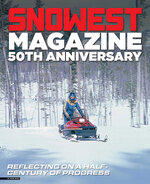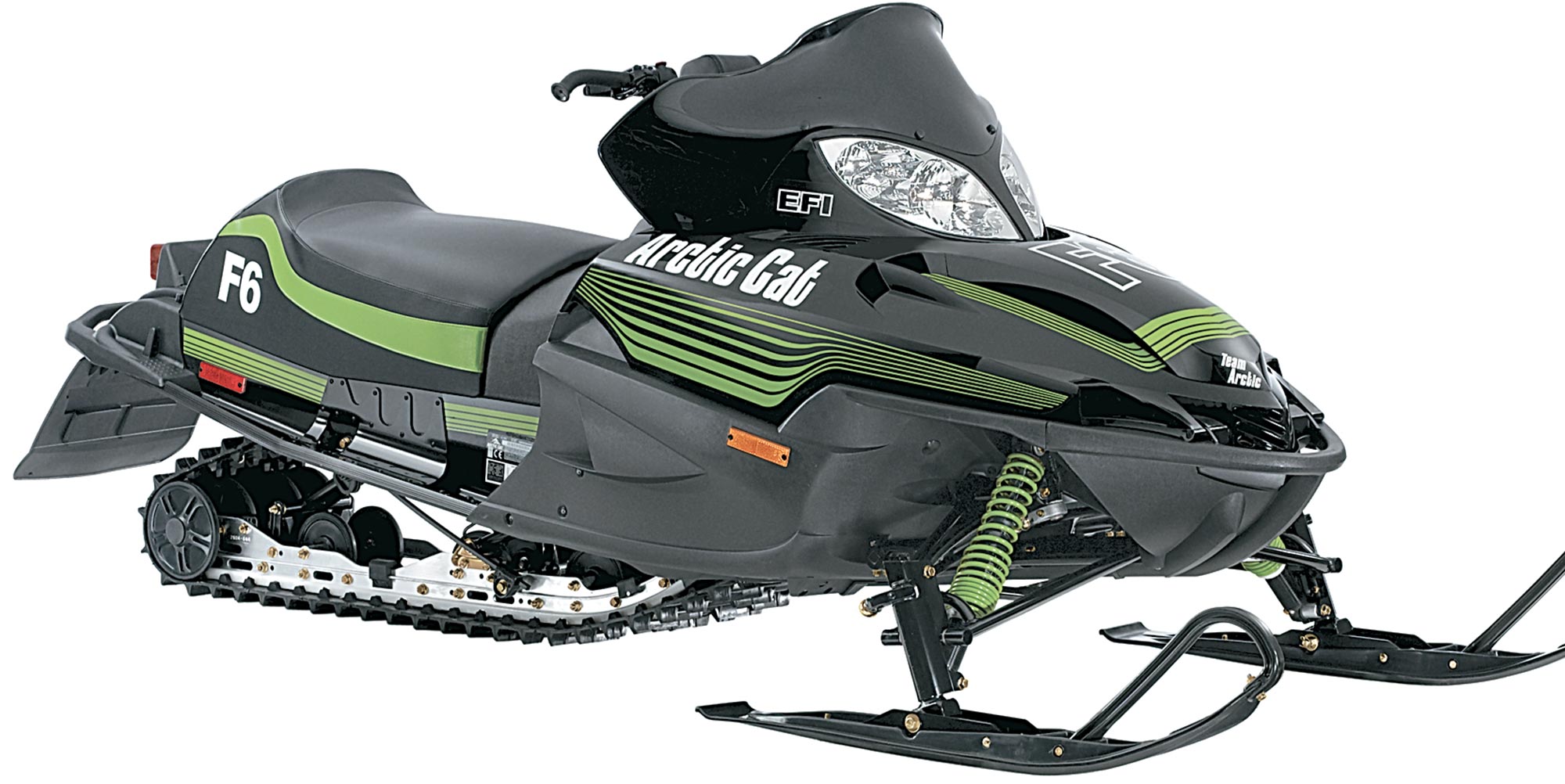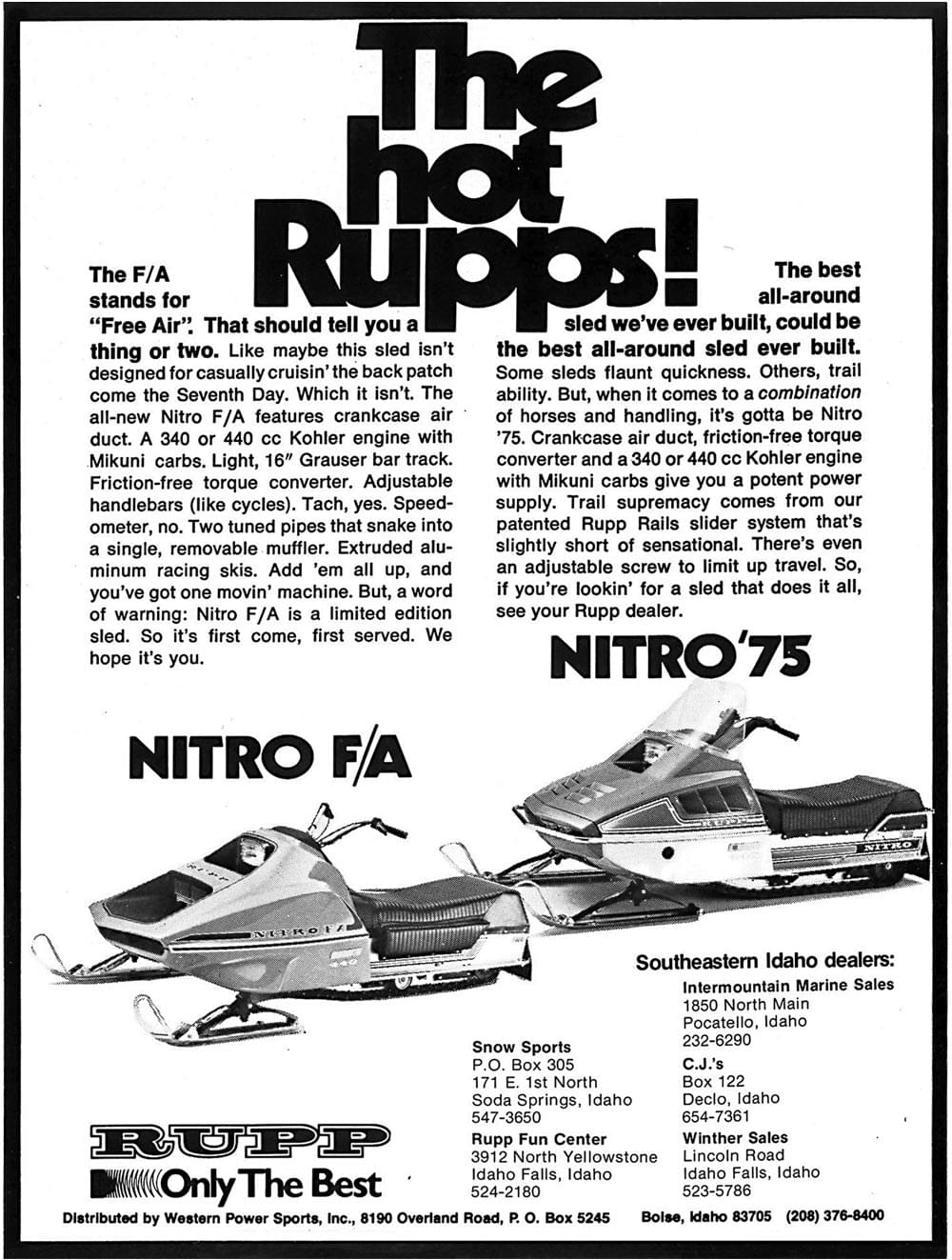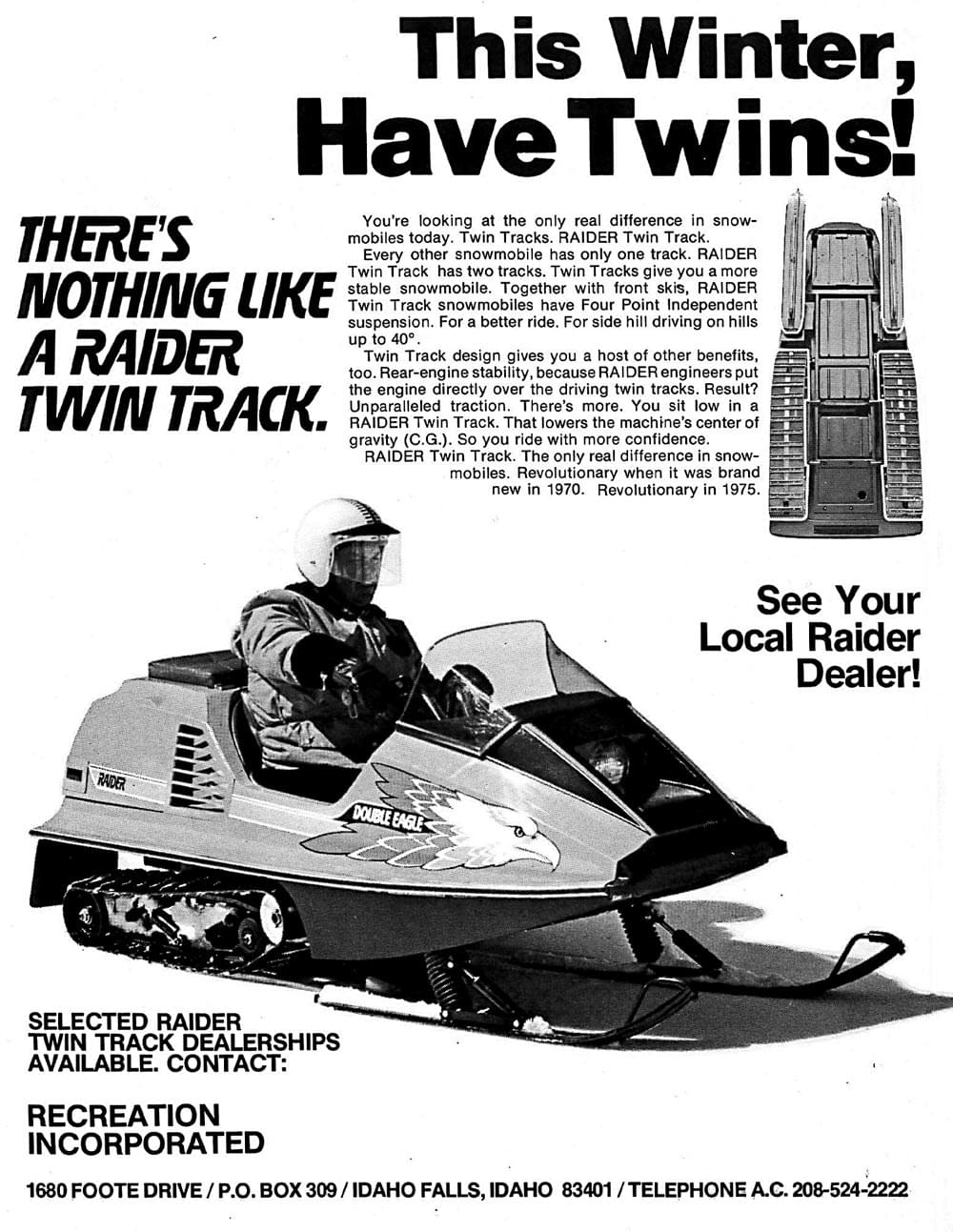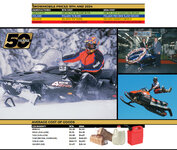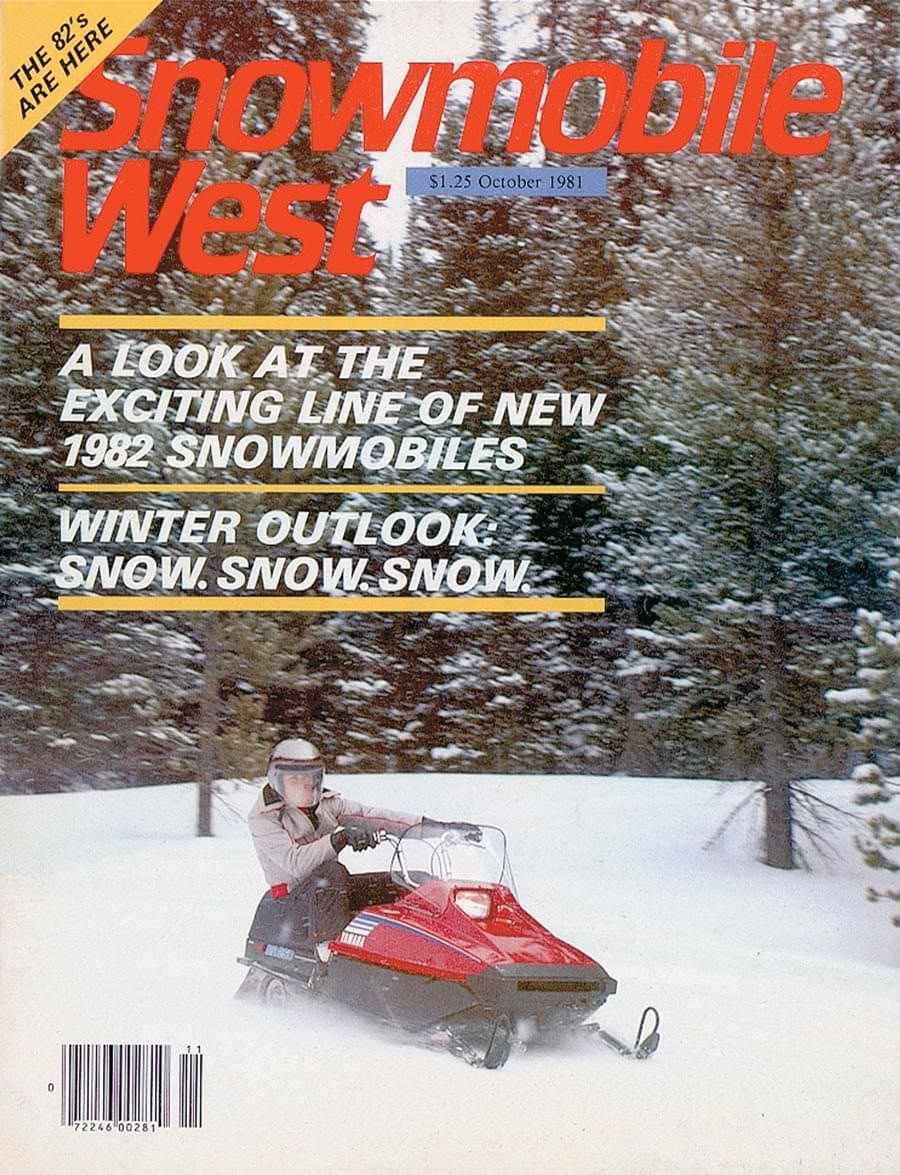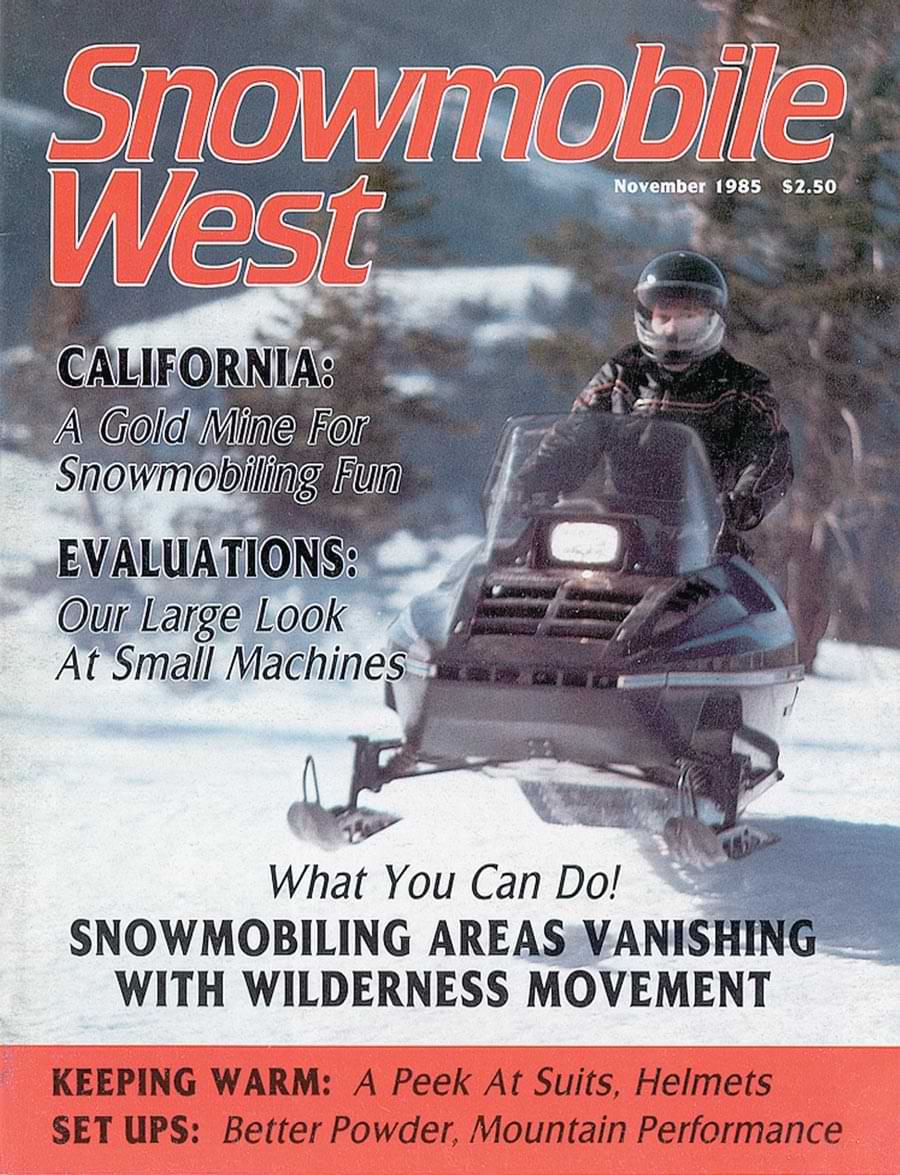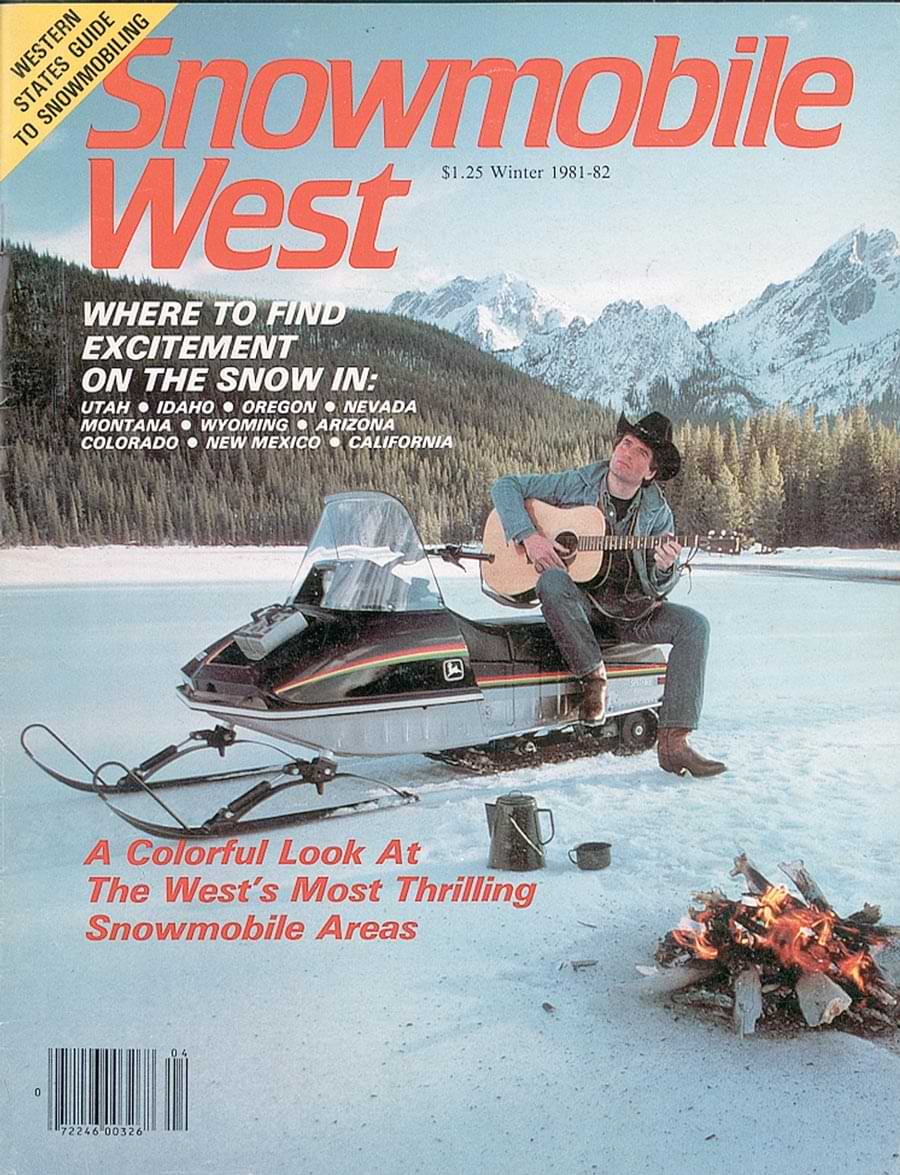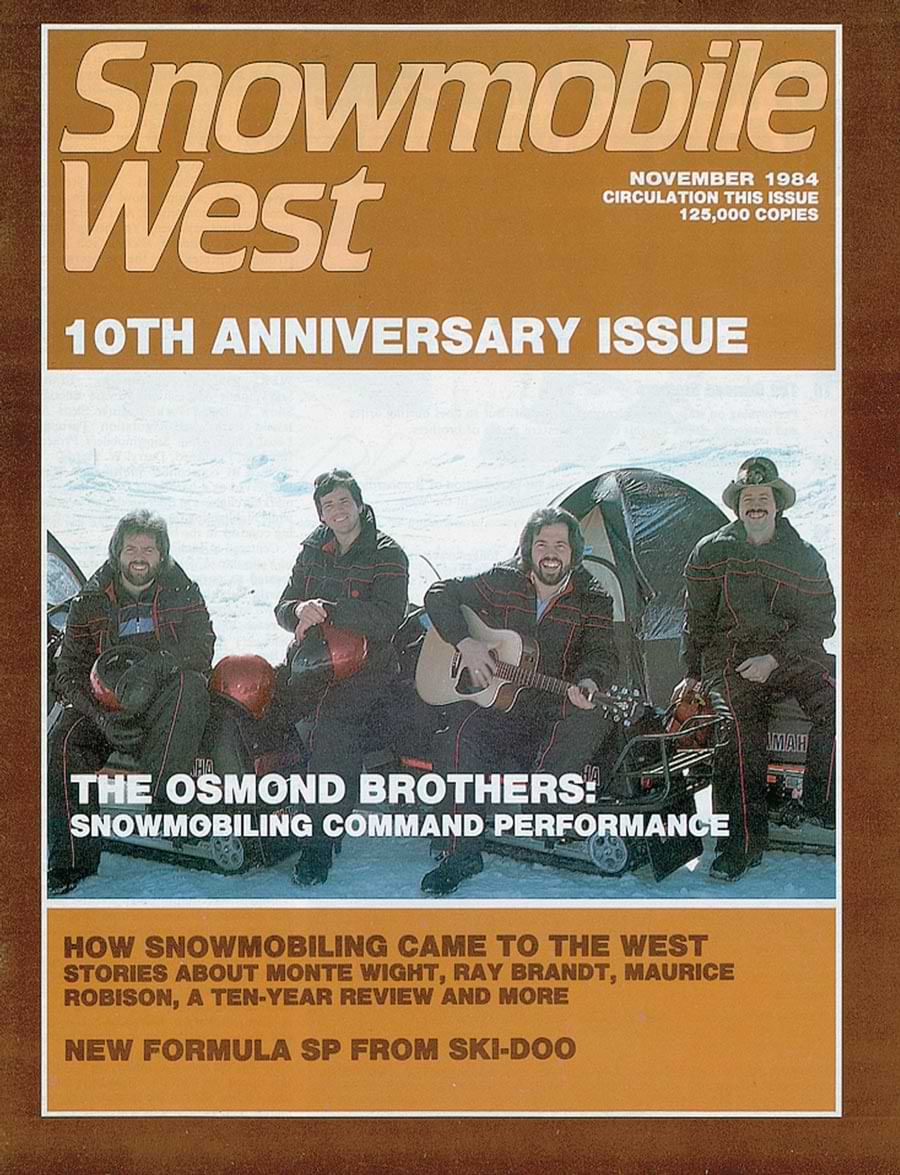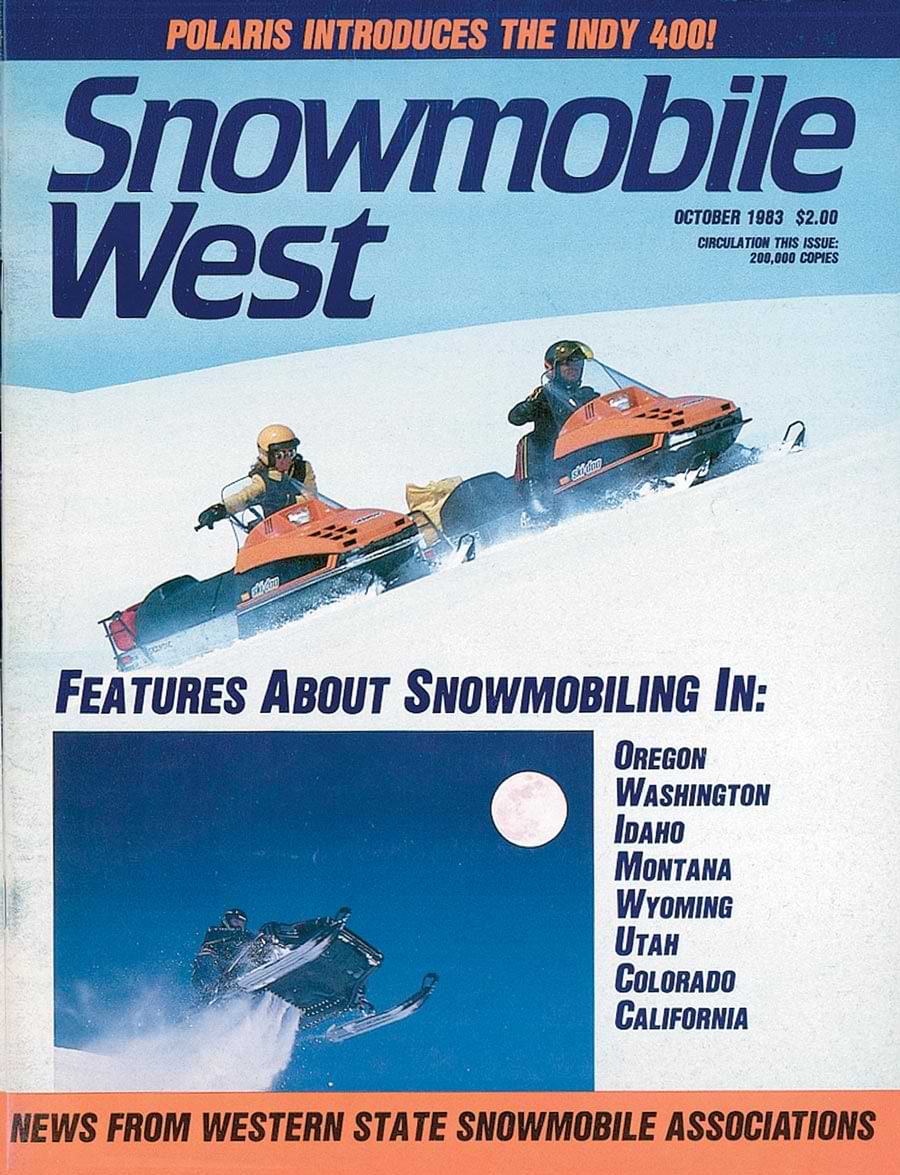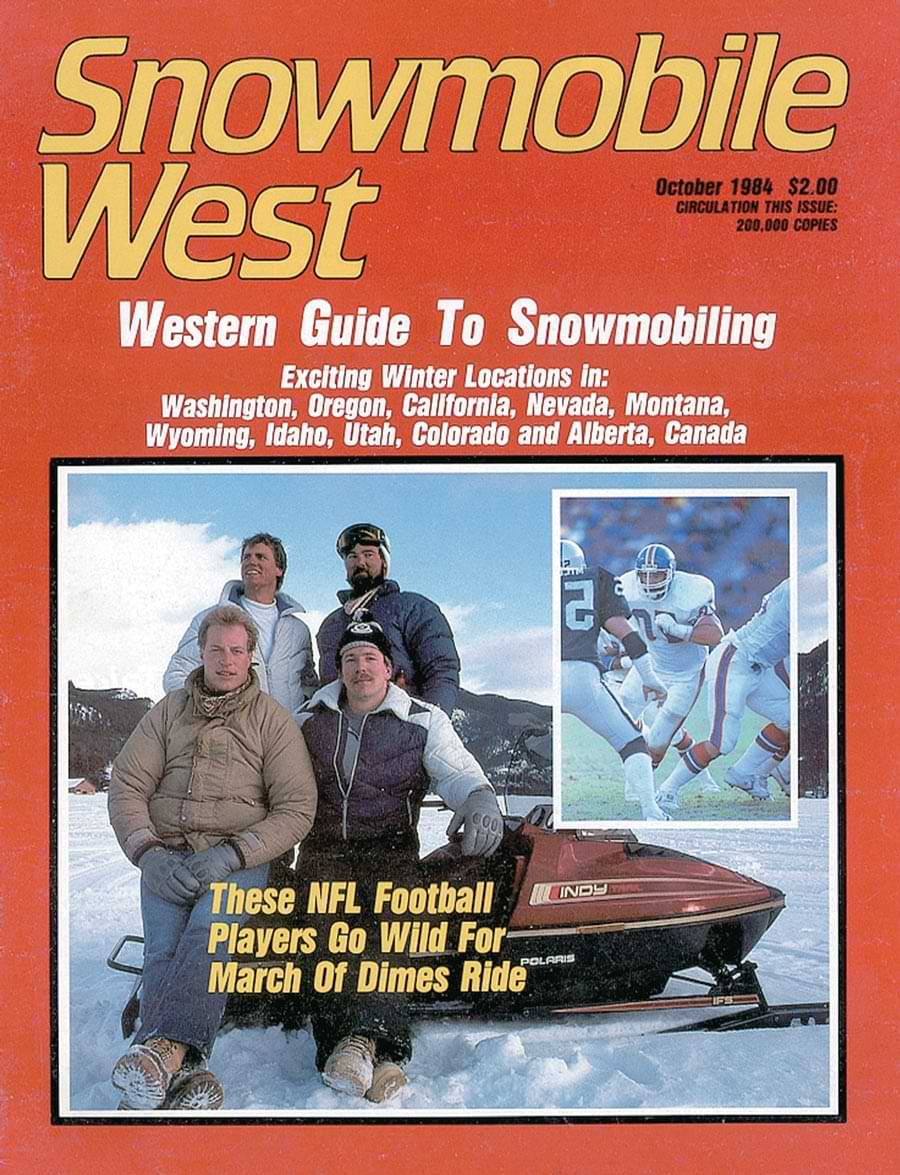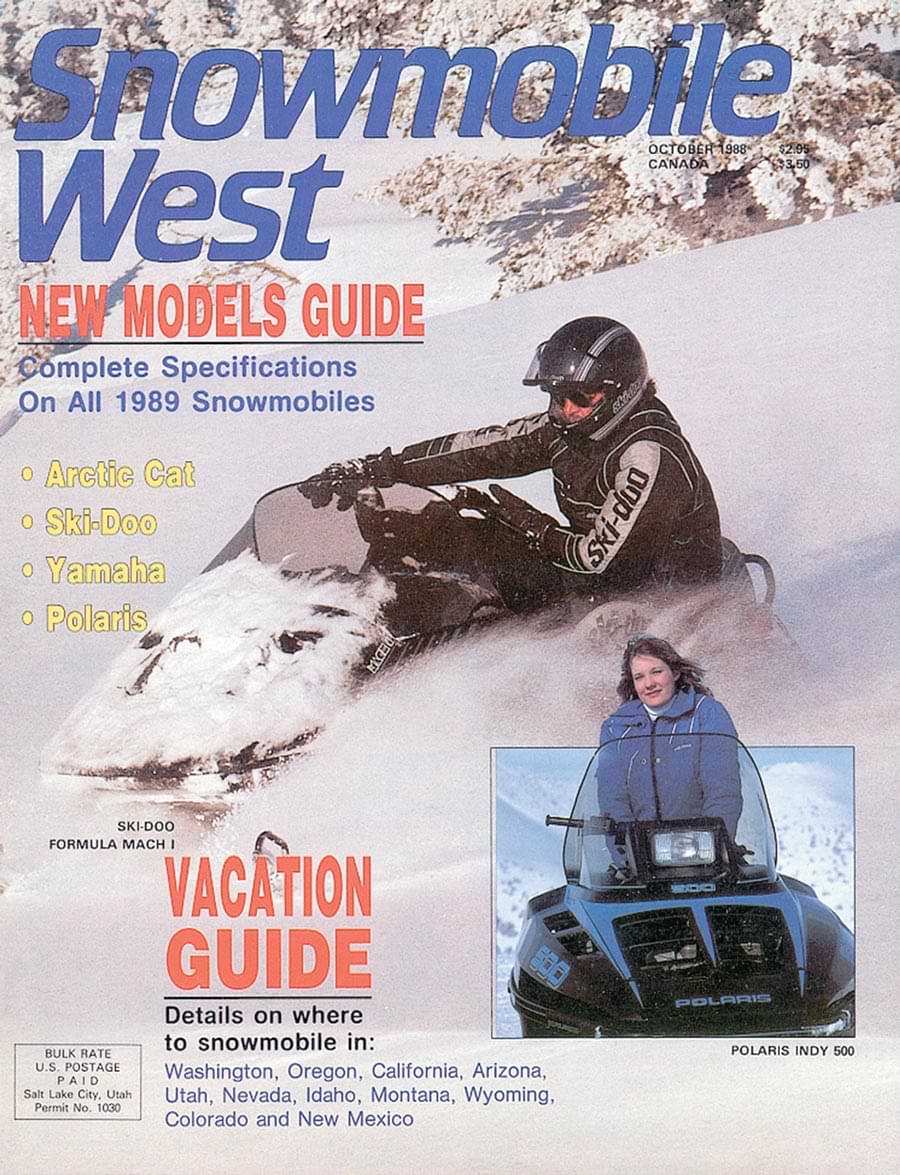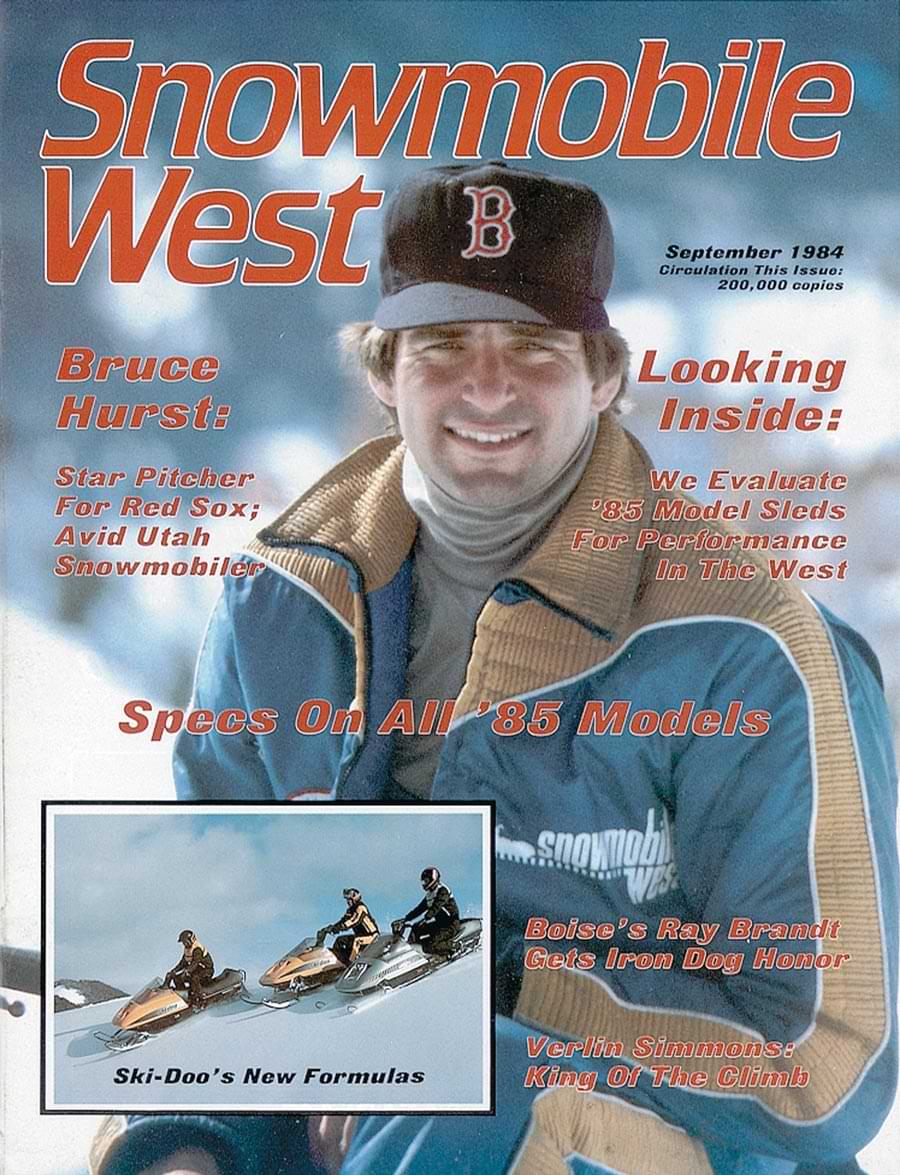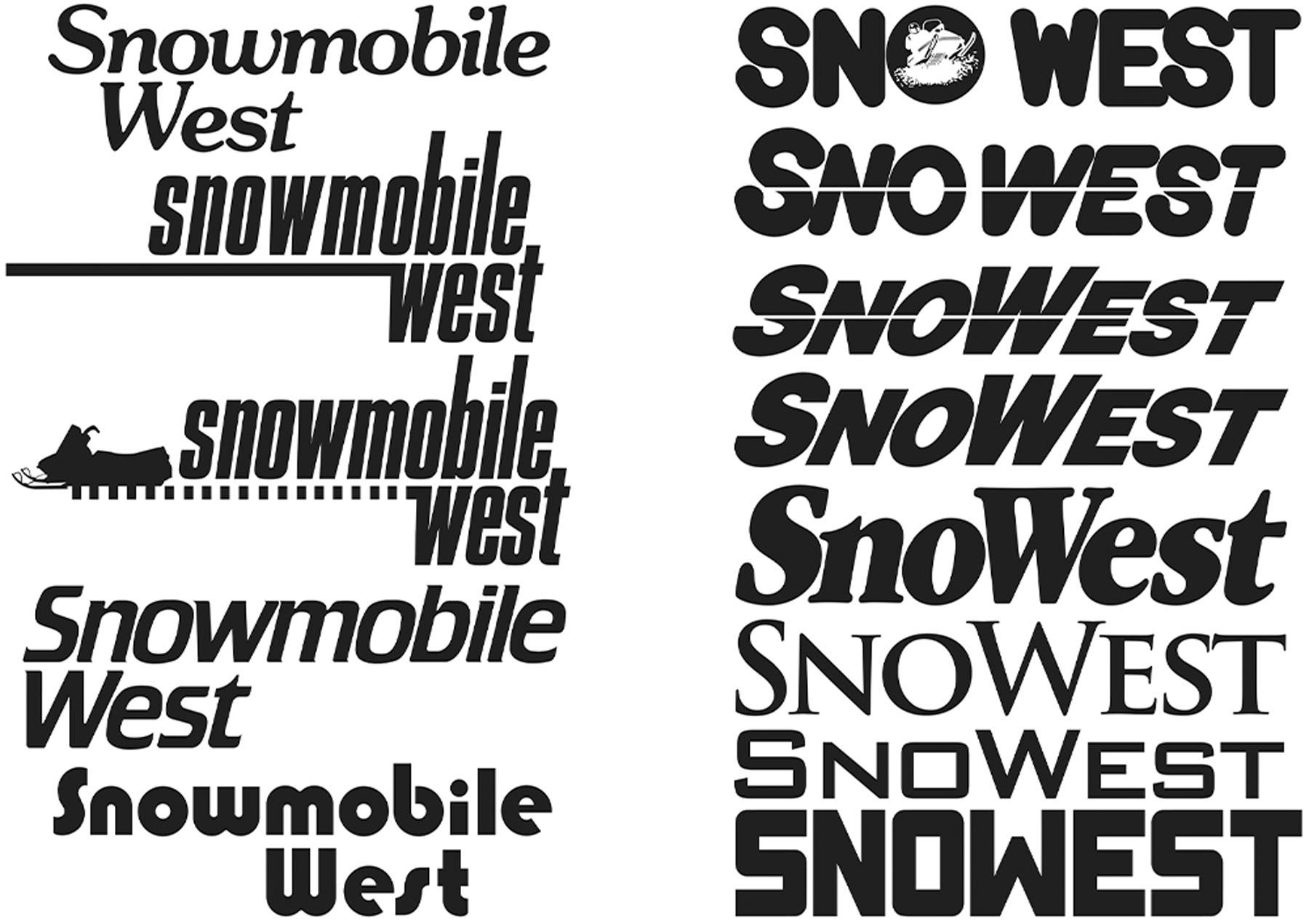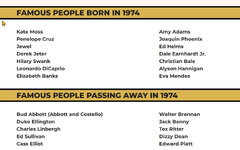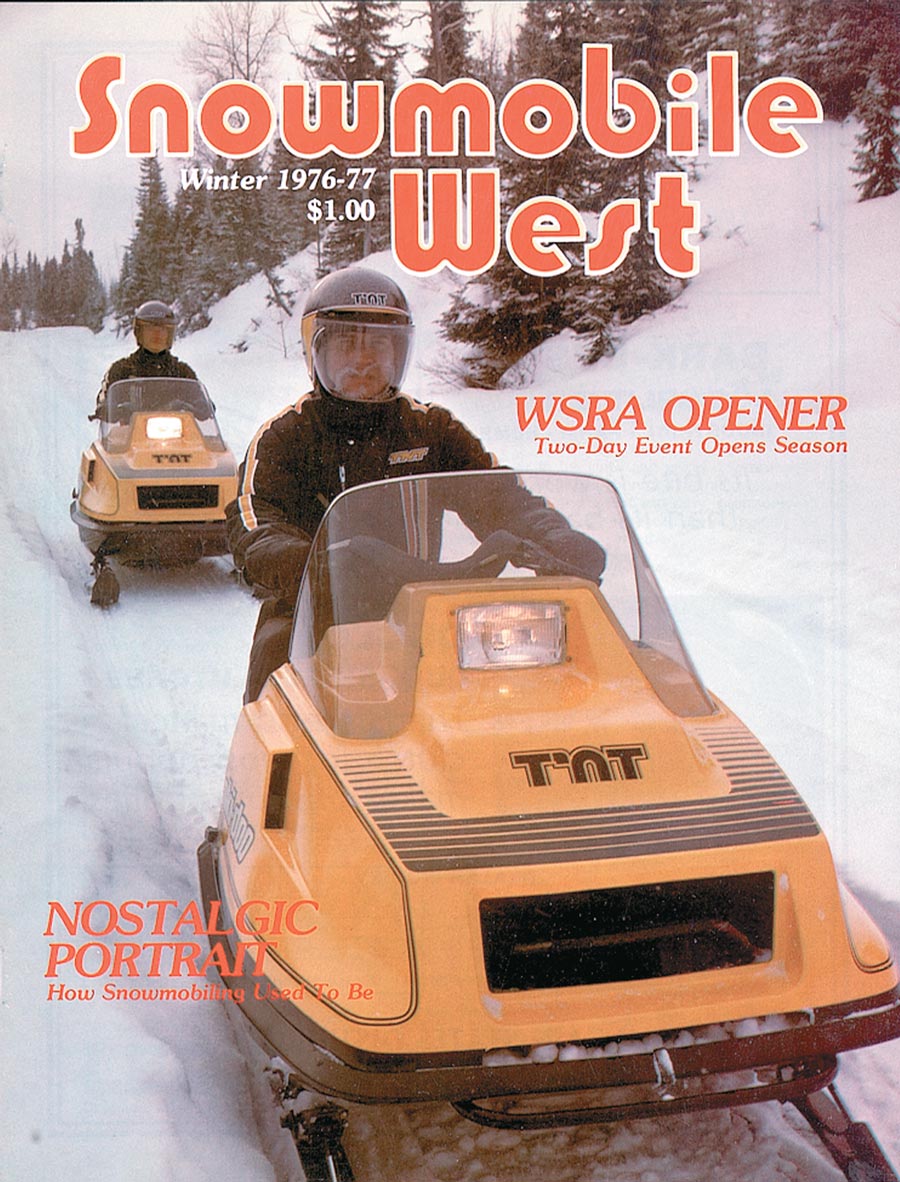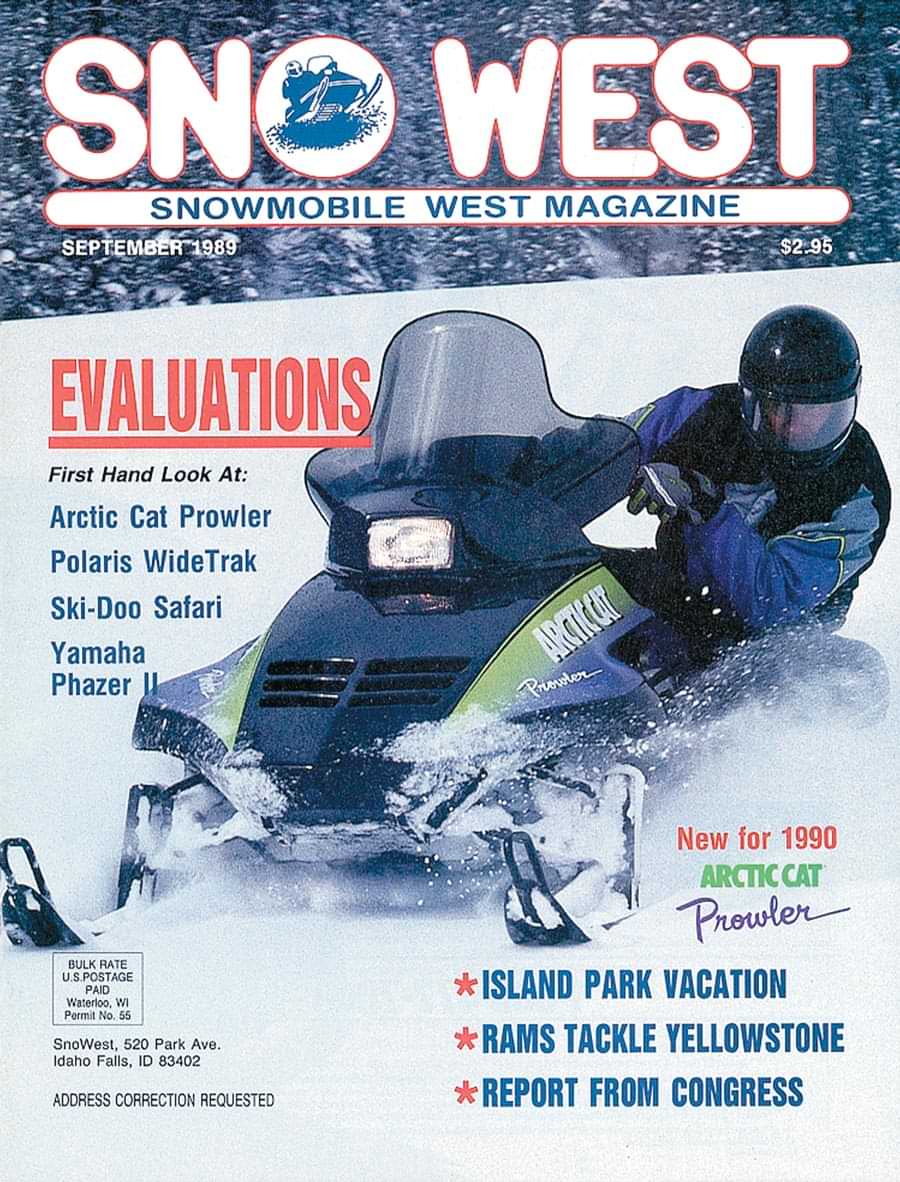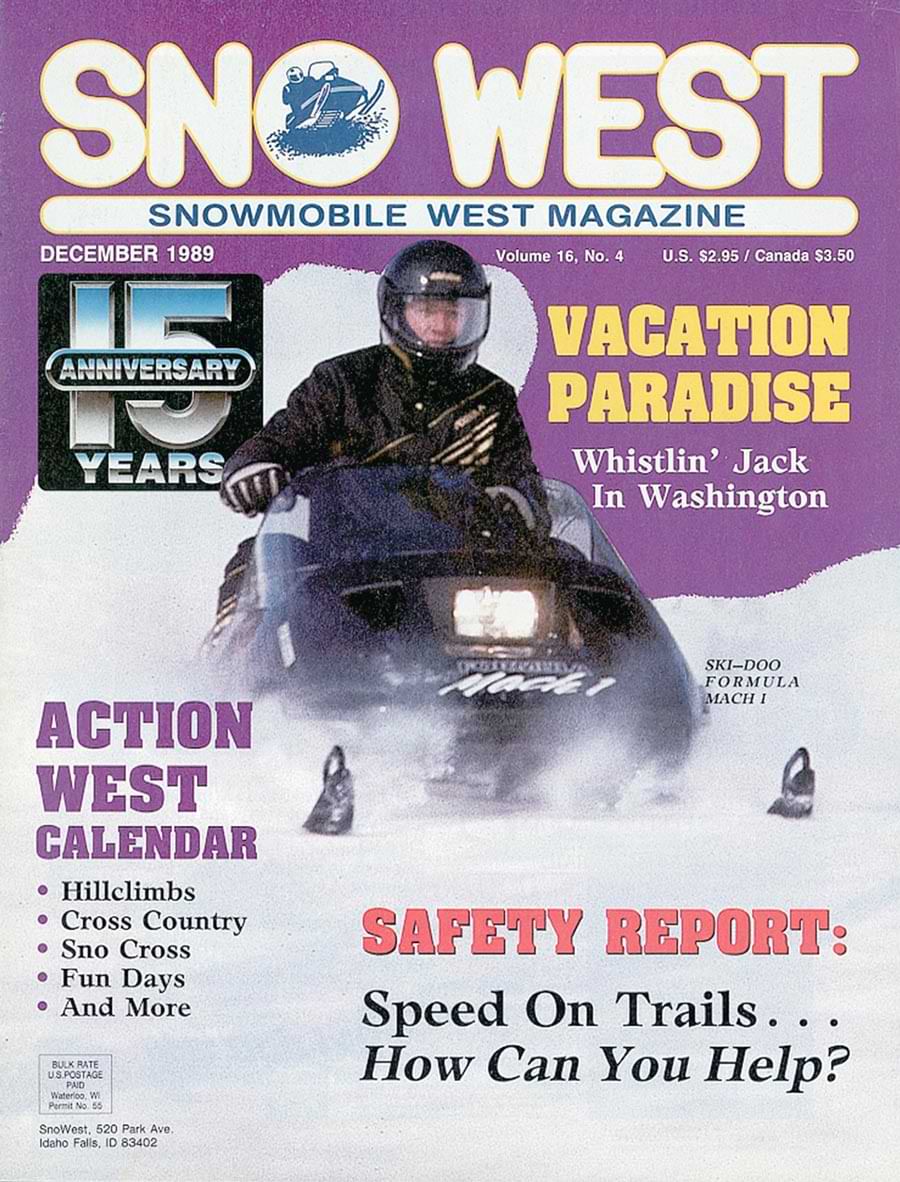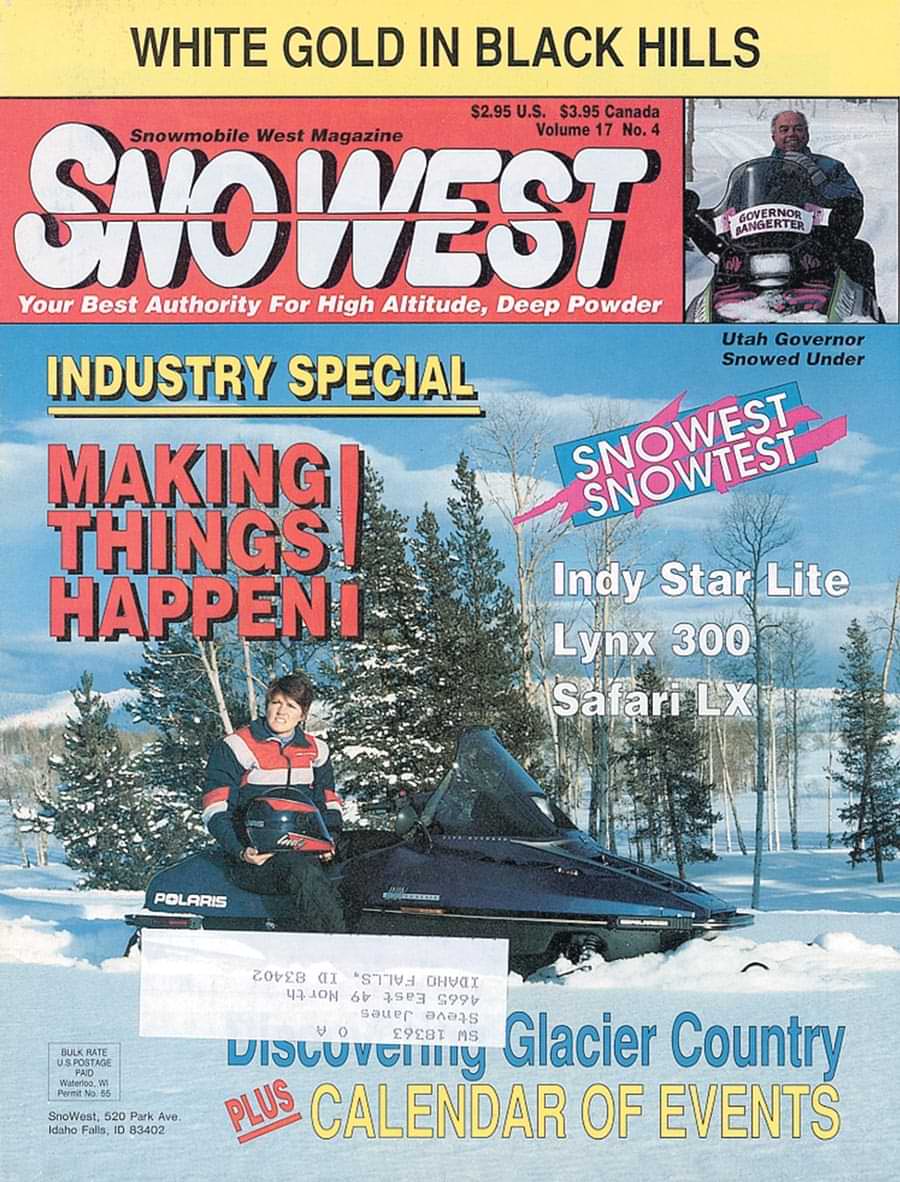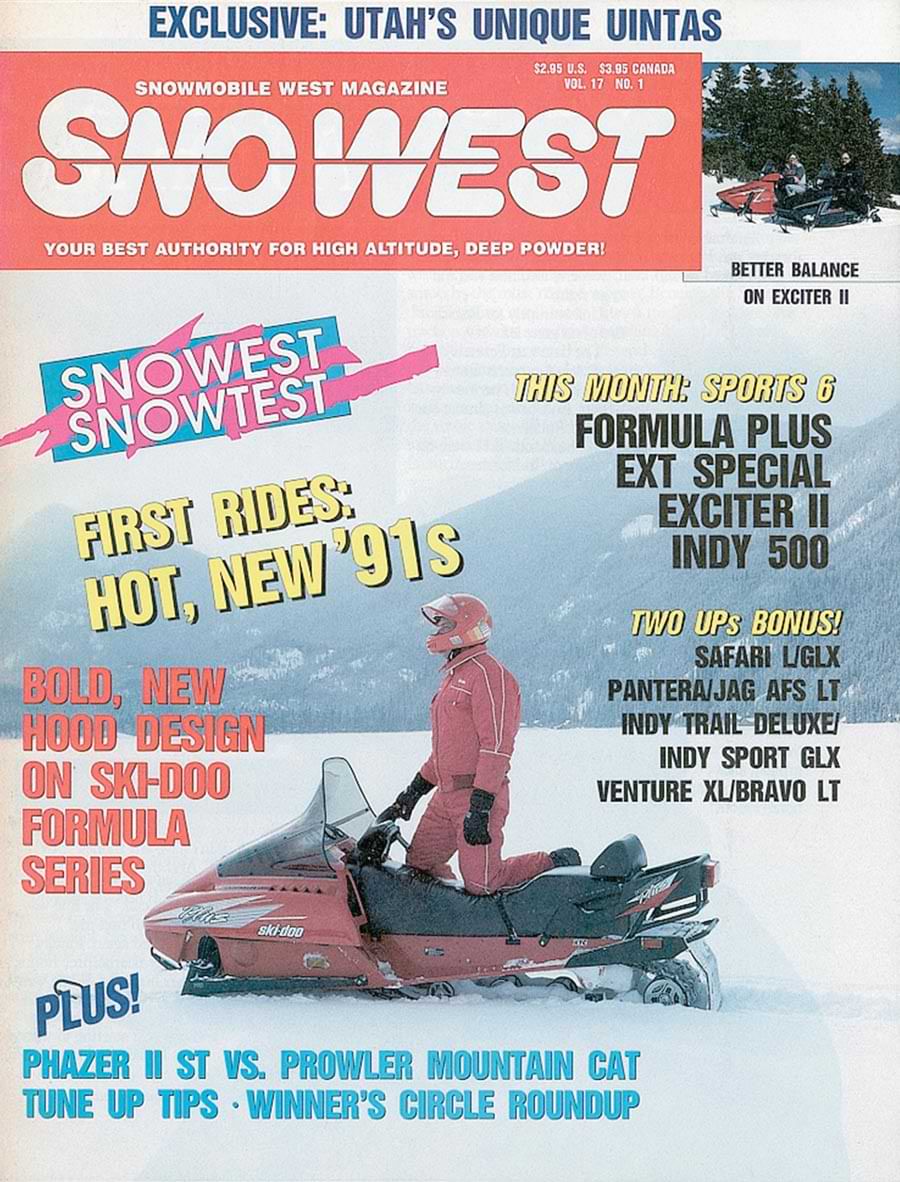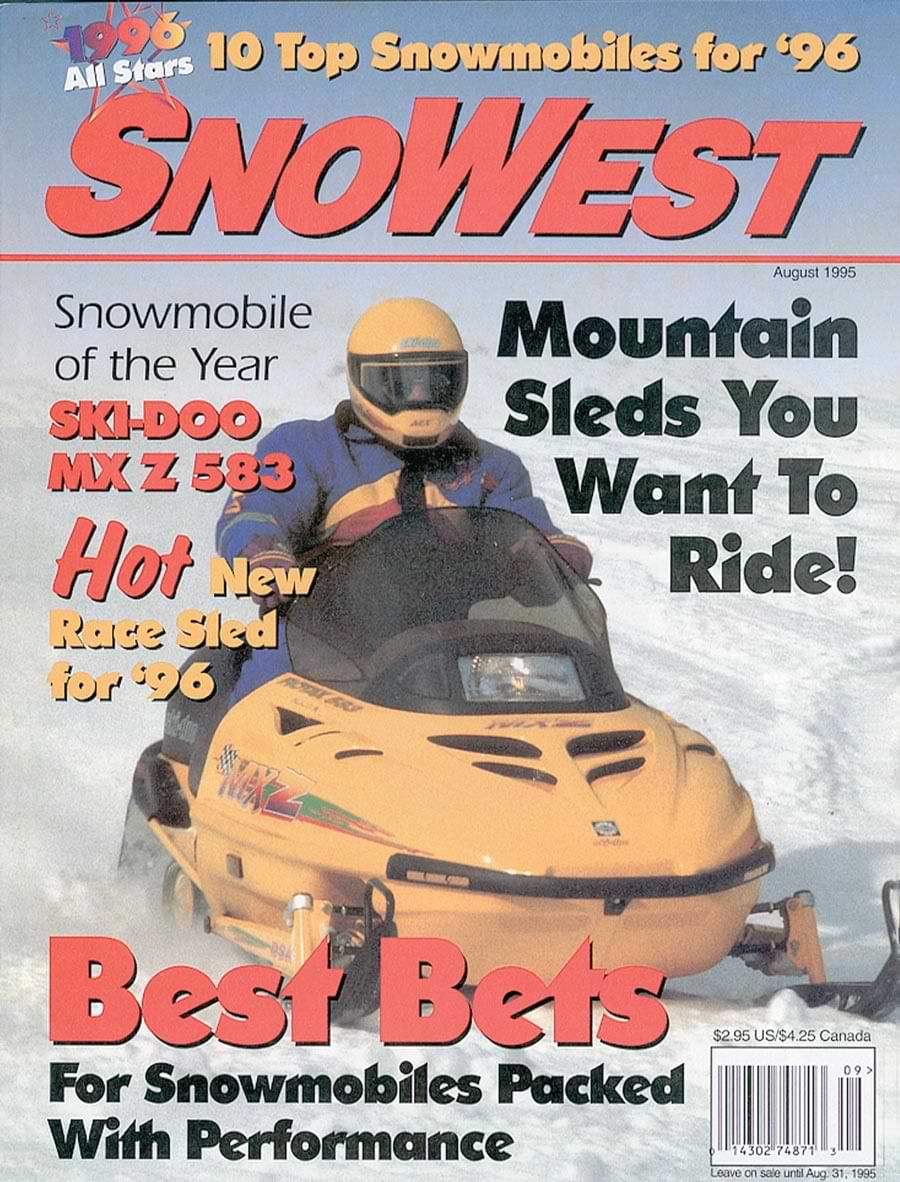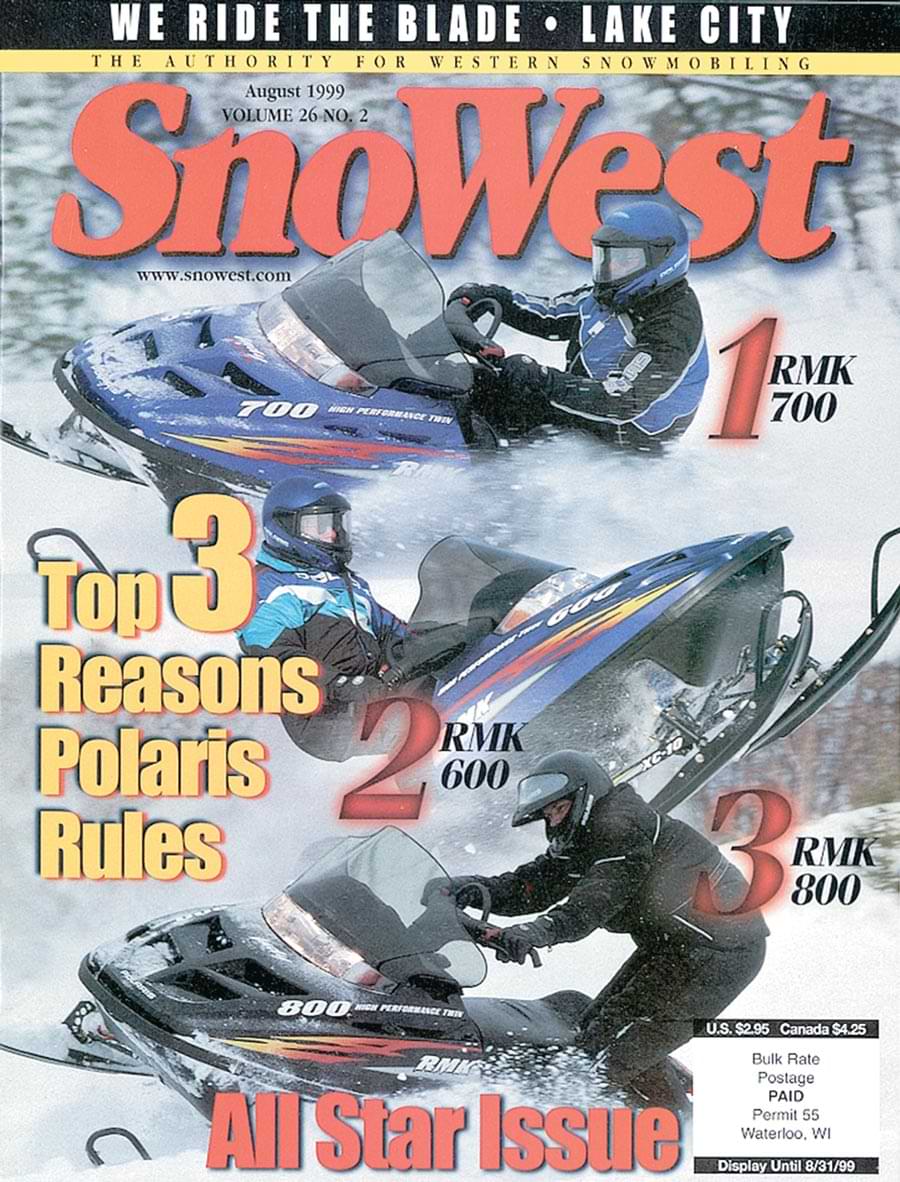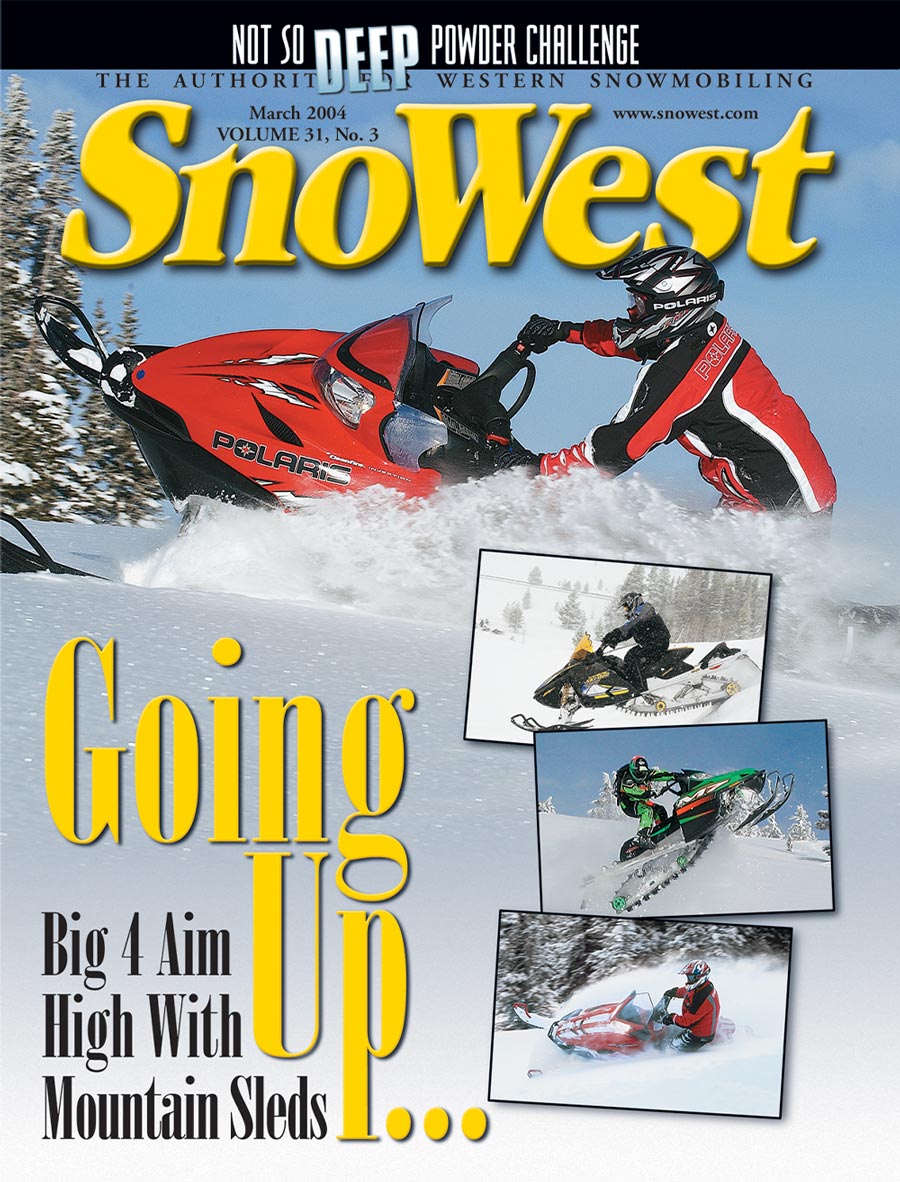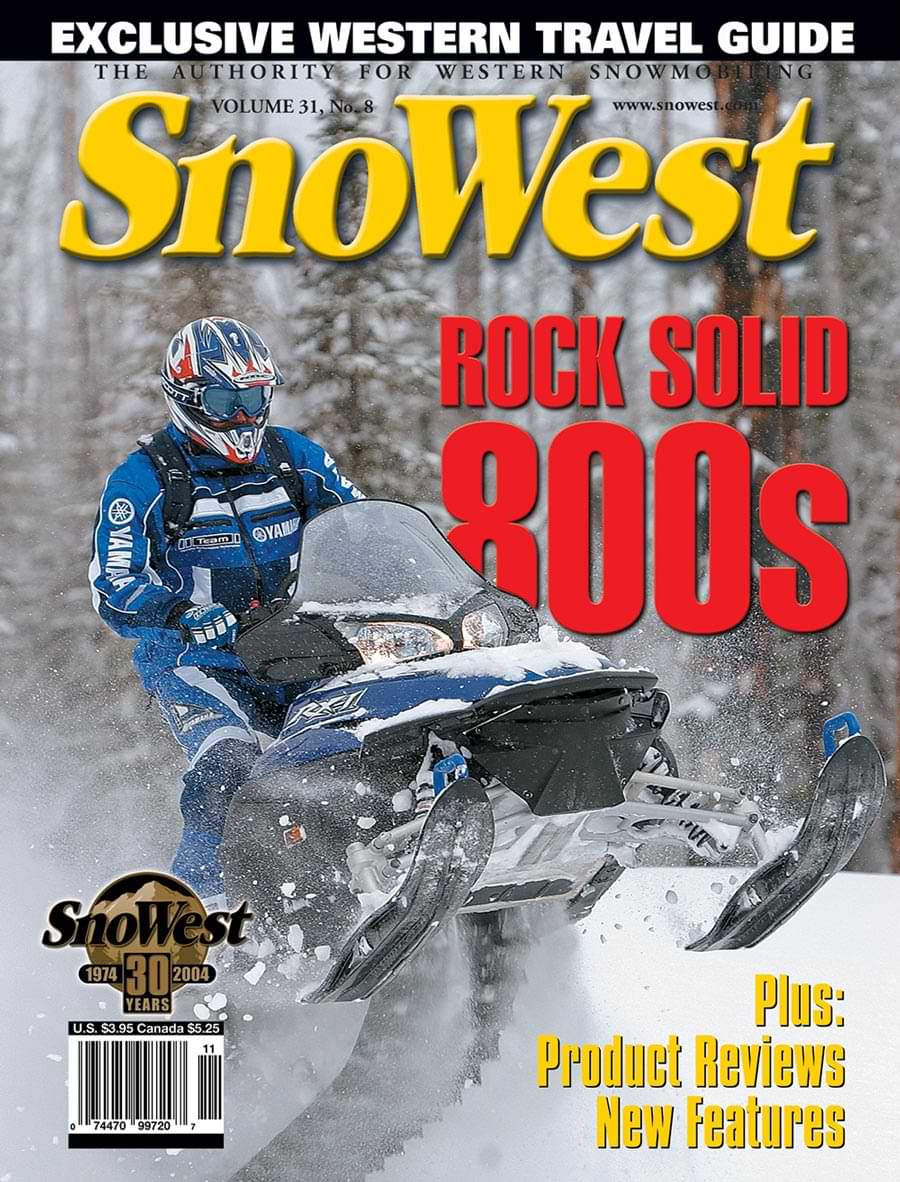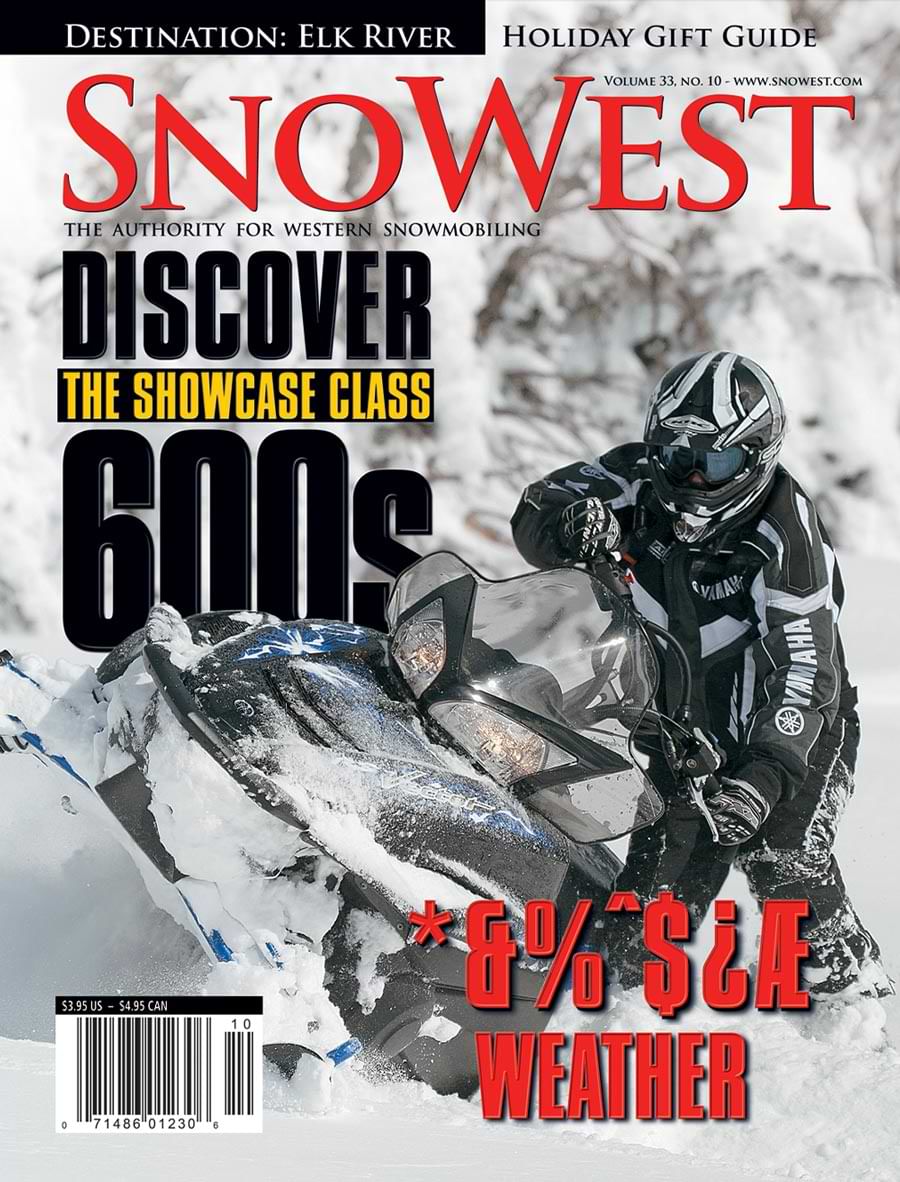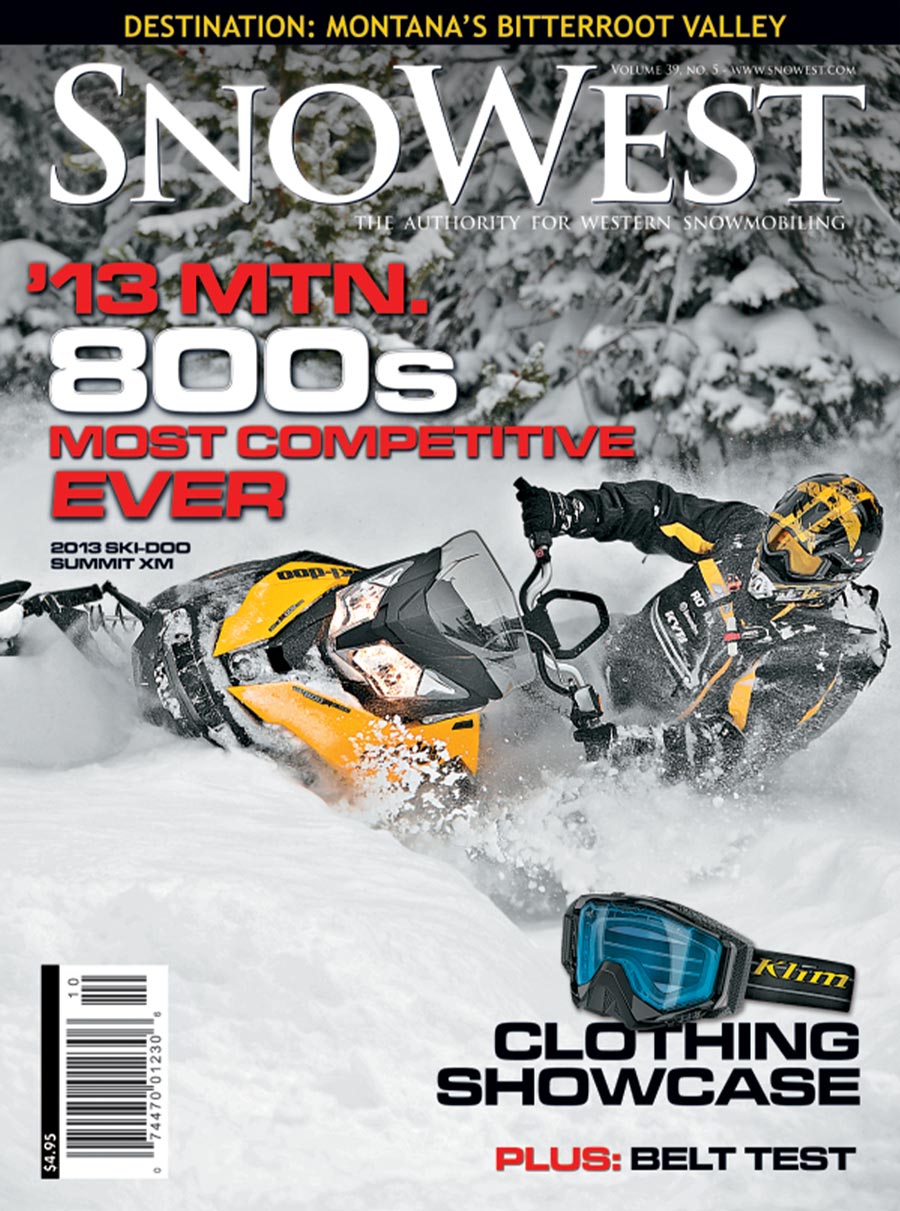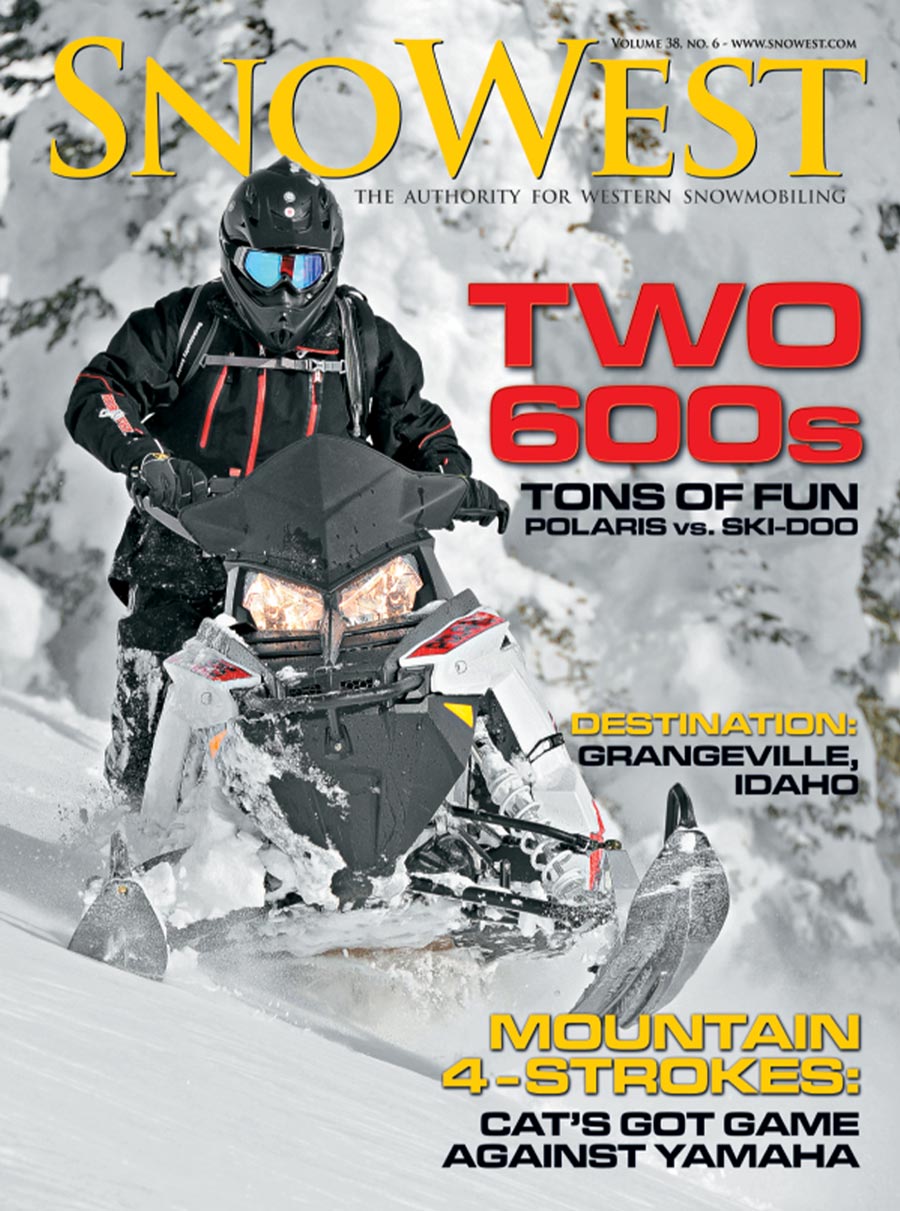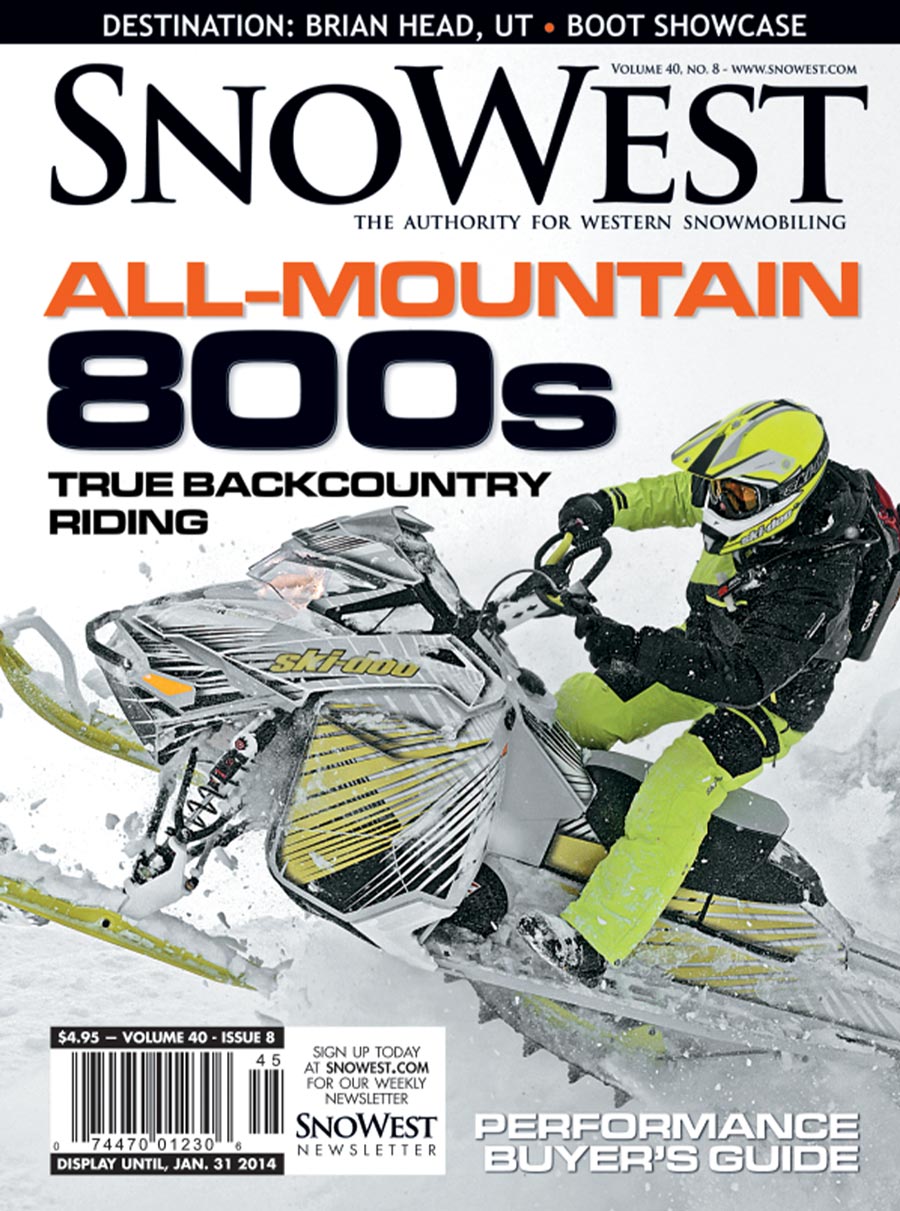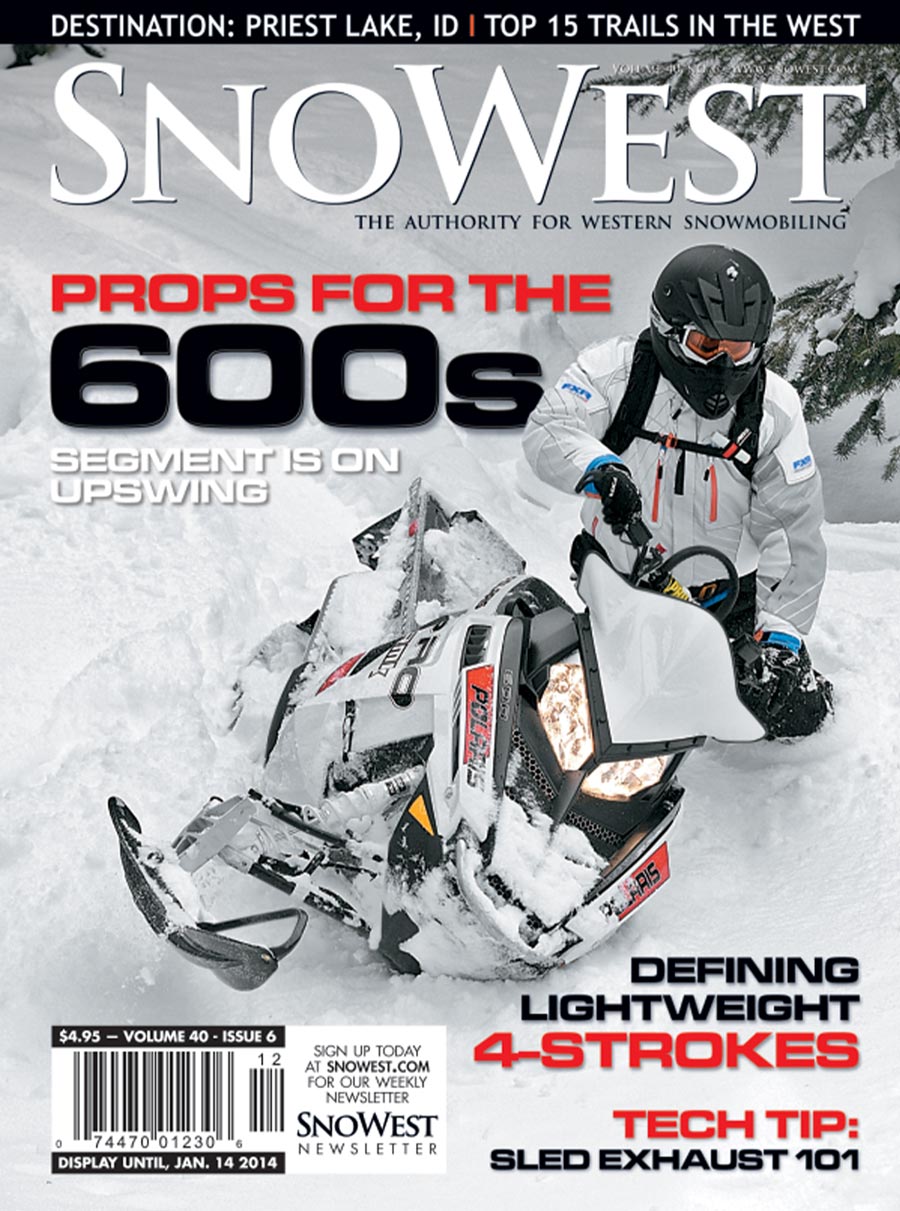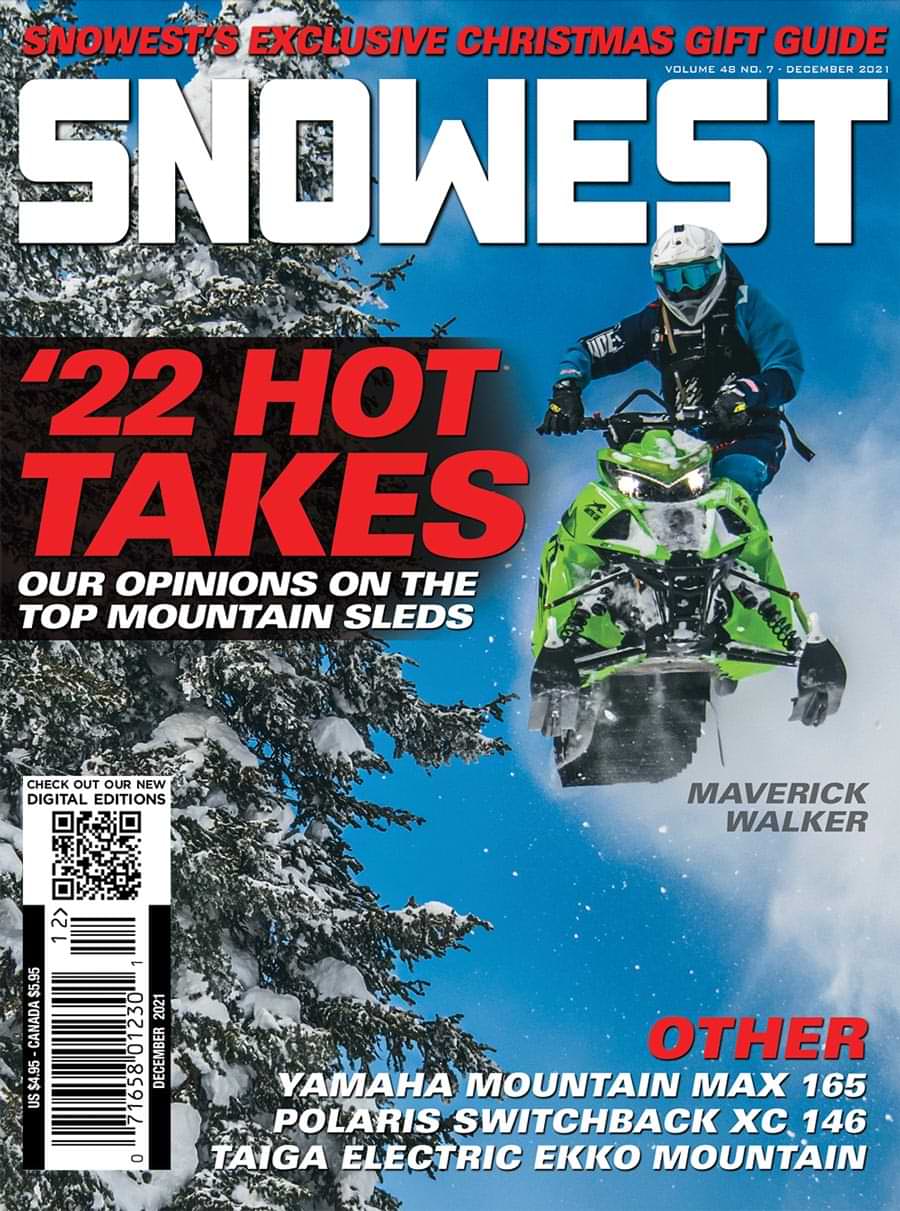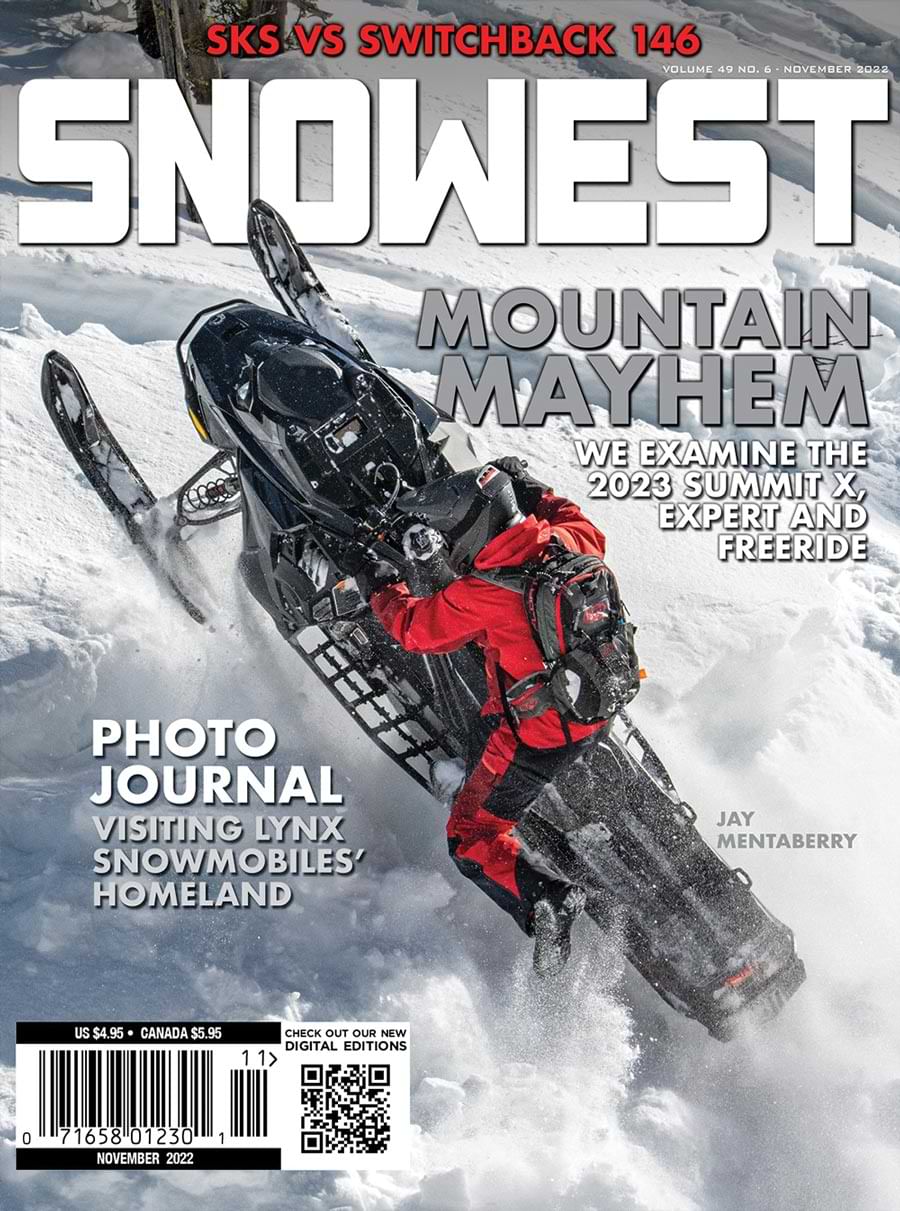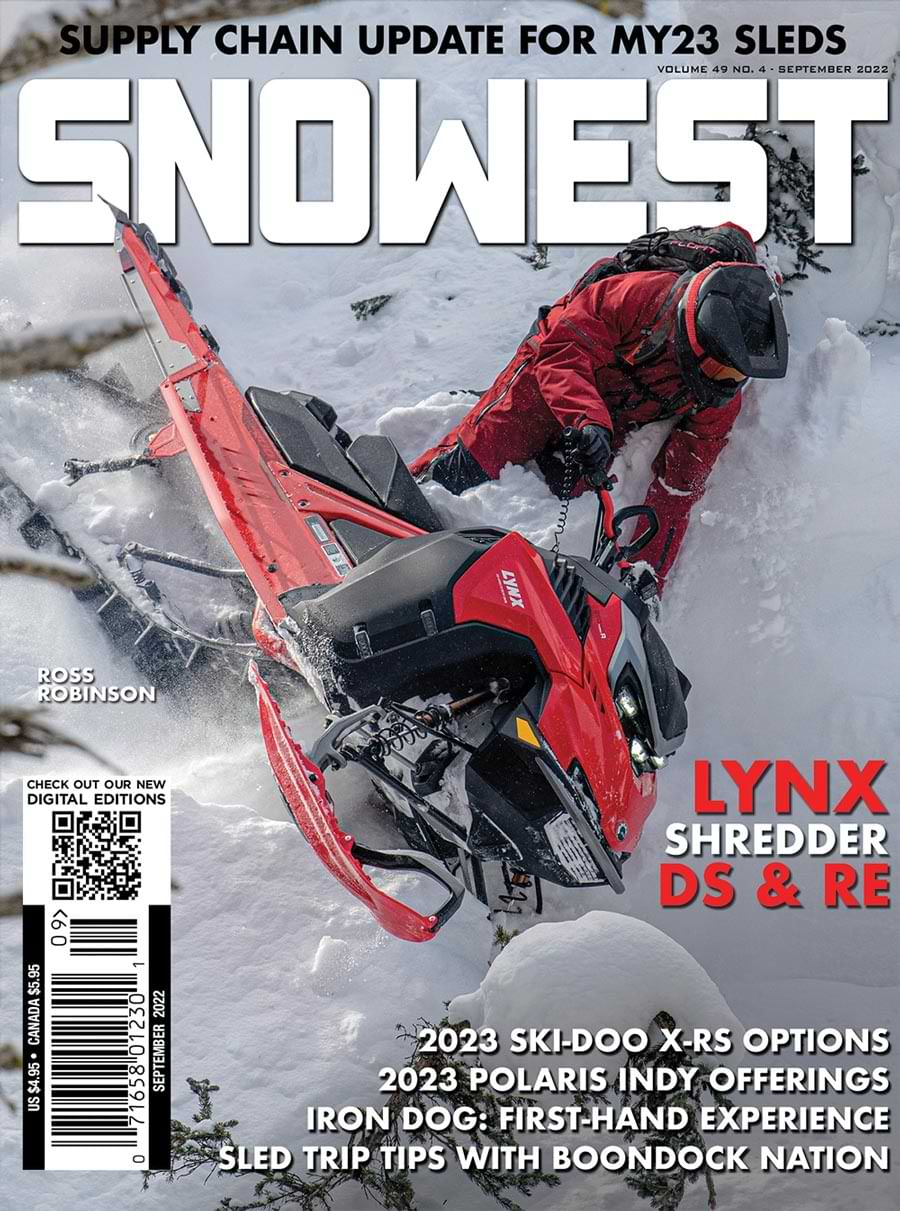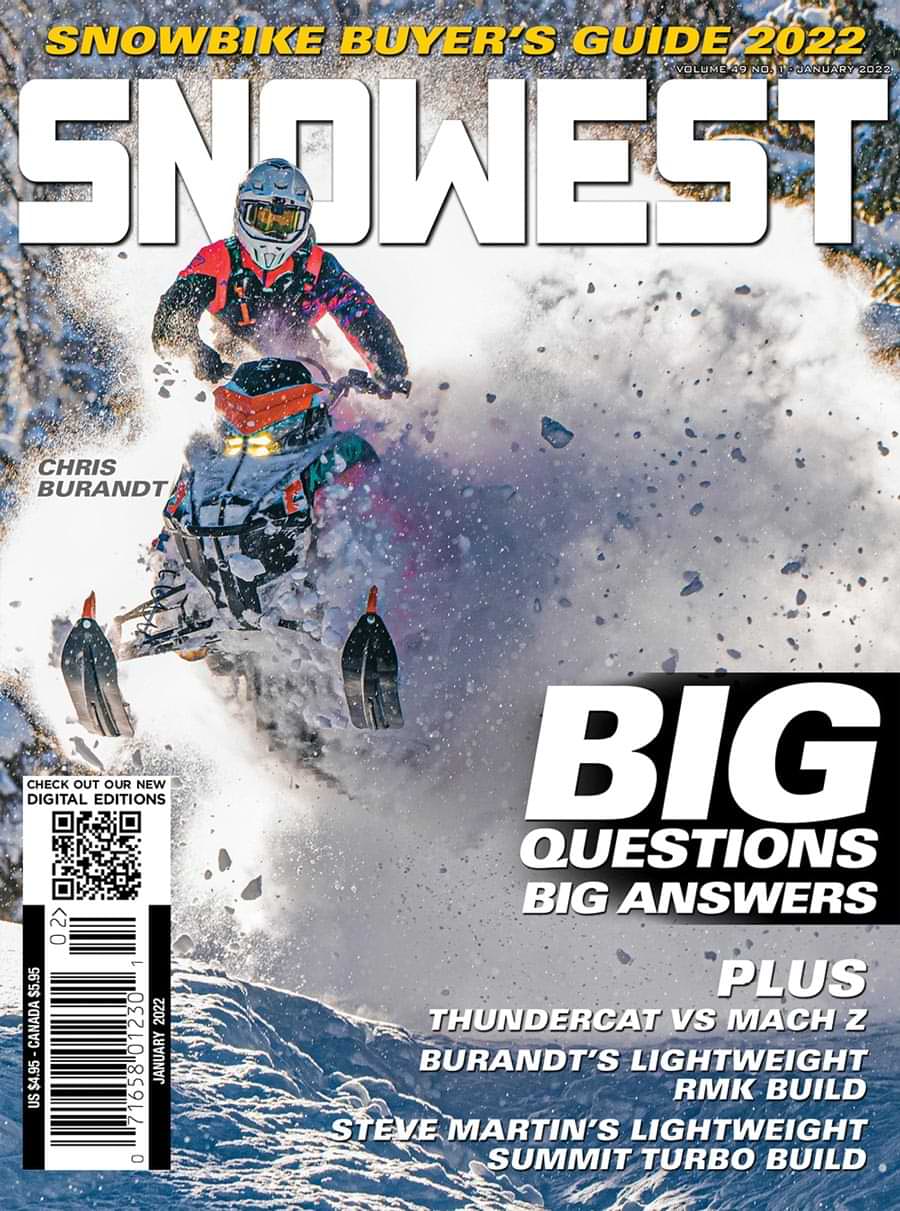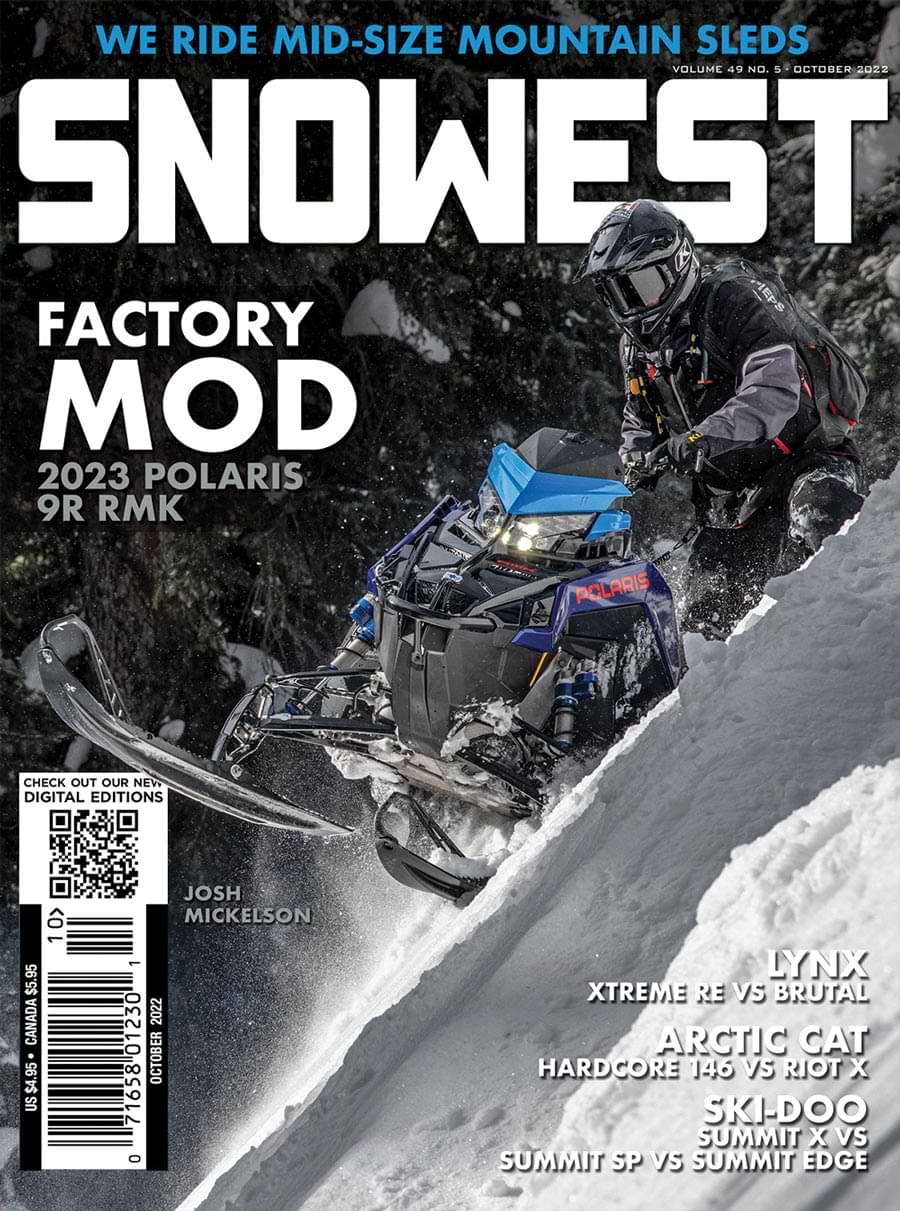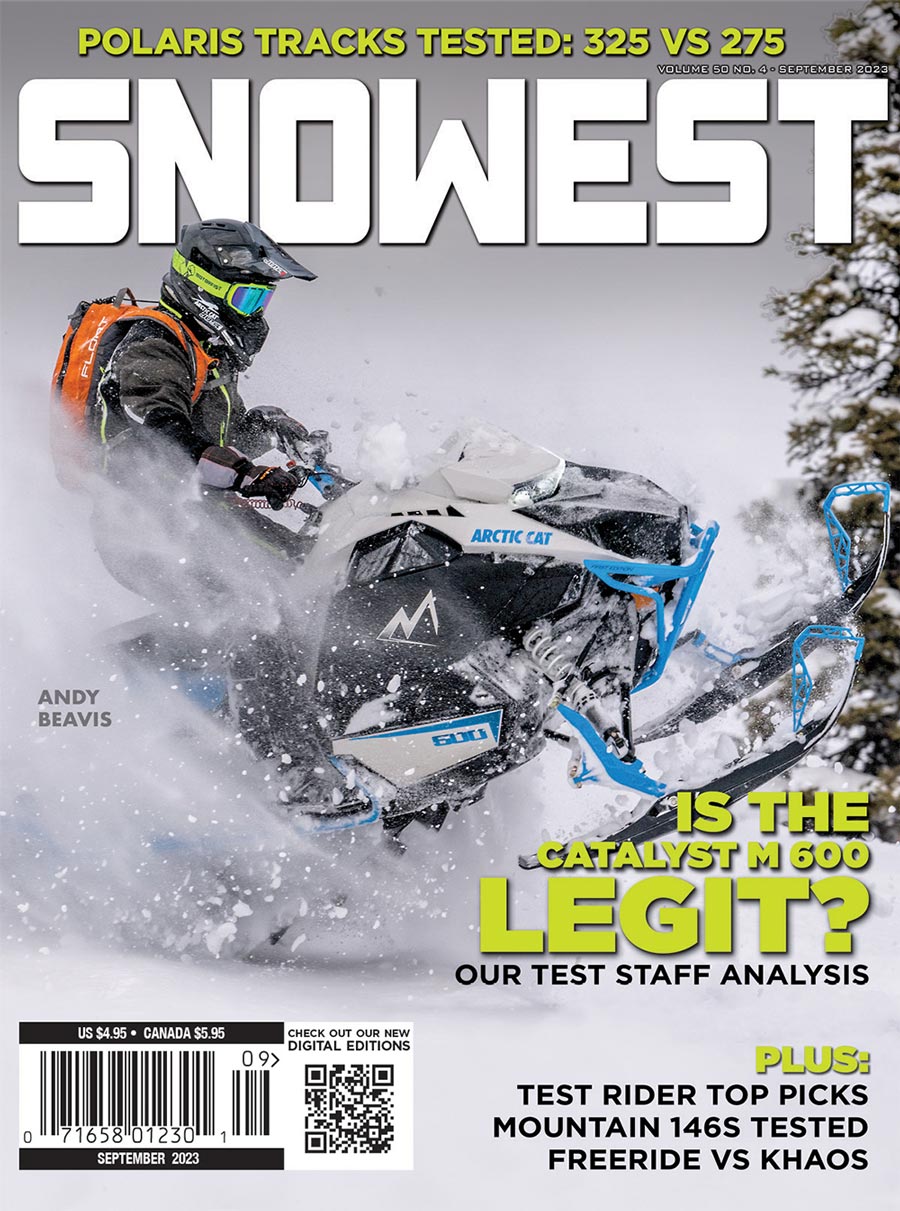Install the app
How to install the app on iOS
Follow along with the video below to see how to install our site as a web app on your home screen.
Note: This feature may not be available in some browsers.
Important SNOWEST Magazine: 50th Anniversary, Reflecting on HALF A CENTURY of Progress
- Thread starter christopher
- Start date
You are using an out of date browser. It may not display this or other websites correctly.
You should upgrade or use an alternative browser.
You should upgrade or use an alternative browser.
Time flies when you’re having fun. It seems like yesterday when I was sneaking my dad’s Arctic Cat Cheetah out of the garage and heading up the Iona hill in eastern Idaho to chase coyotes around the grain fields.
It’s also been 50 years since a young Darryl Harris decided “on a wing and a prayer” to publish a magazine focusing on western snowmobiling.
In the 1960s there was an explosion in the snowmobile industry throughout the Midwest. Everyone and their dog seemed to be building sleds … to the point that by 1972 the market was saturated. Snowmobiling started its transition from a novelty to an industry. Snowmobile manufacturers were coming and going, mostly dependent on manufacturing capabilities and the strength of the dealer network. The industry started spreading westward in search of new markets.
When Harris printed his first issue of SnoWest Magazine, the West represented only a tiny segment of the snowmobiling market. Snowmobiles were designed for the lakes and established trails in the Midwest. The deep mountain snow was too challenging for Midwest technology. Yet Harris had a vision that someday the West would rule the industry. With the evolution of snowmobile technology, that day eventually came.

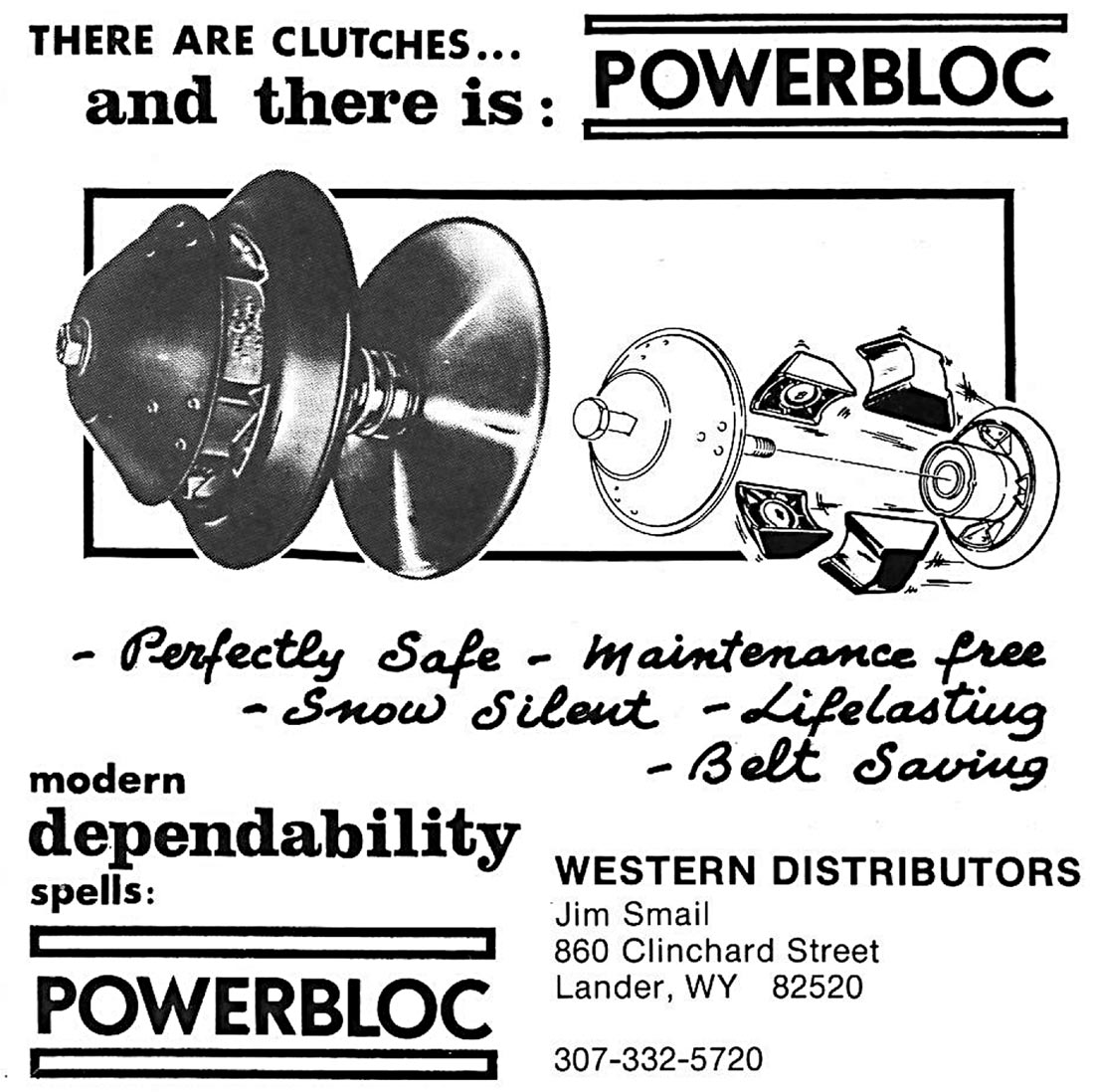
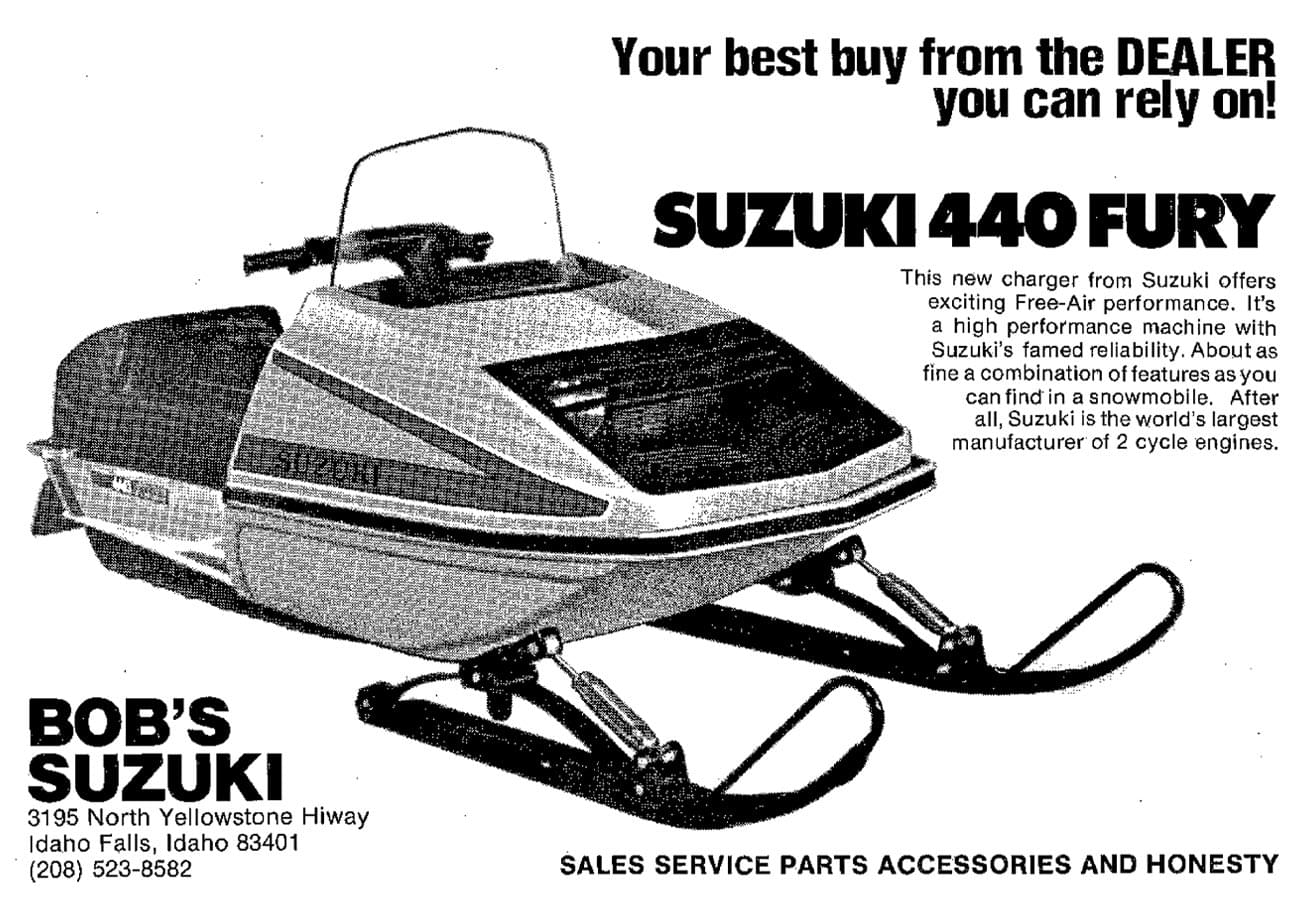


LIST OF ADVERTISERS
SNOWMOBILE WEST — NOVEMBER 1974
It’s also been 50 years since a young Darryl Harris decided “on a wing and a prayer” to publish a magazine focusing on western snowmobiling.
In the 1960s there was an explosion in the snowmobile industry throughout the Midwest. Everyone and their dog seemed to be building sleds … to the point that by 1972 the market was saturated. Snowmobiling started its transition from a novelty to an industry. Snowmobile manufacturers were coming and going, mostly dependent on manufacturing capabilities and the strength of the dealer network. The industry started spreading westward in search of new markets.
When Harris printed his first issue of SnoWest Magazine, the West represented only a tiny segment of the snowmobiling market. Snowmobiles were designed for the lakes and established trails in the Midwest. The deep mountain snow was too challenging for Midwest technology. Yet Harris had a vision that someday the West would rule the industry. With the evolution of snowmobile technology, that day eventually came.





LIST OF ADVERTISERS
SNOWMOBILE WEST — NOVEMBER 1974
- POLARIS
- MUTUAL OF ENUMCLAW
- SKI-DOO
- SKI-DOO DEALERS
- SKI-WHIZ (MASSEY FERGUSON)
- RUPP
- WESTERN POWER SPORTS
- BOB’S SUZUKI
- LAKEVIEW
- POND’S LODGE
- POWERBLOC
- HARLEY DAVIDSON
- ARCTIC CAT
- ARCTIC CAT DEALERS
- SKIROULE
- RAIDER
- ARBE PRODUCTS
- PINECREST PRECISION INC.
- ABERDEEN JAYCEES
- LEMANS SNOBIL OIL
- MERCURY MARINE SNOWMOBILES
- ALSPORT COLORADO
- YAMAHA
- YAMAHA DEALERS
- MACK’S INN
- SNO-JET
- SNO-JET DEALERS
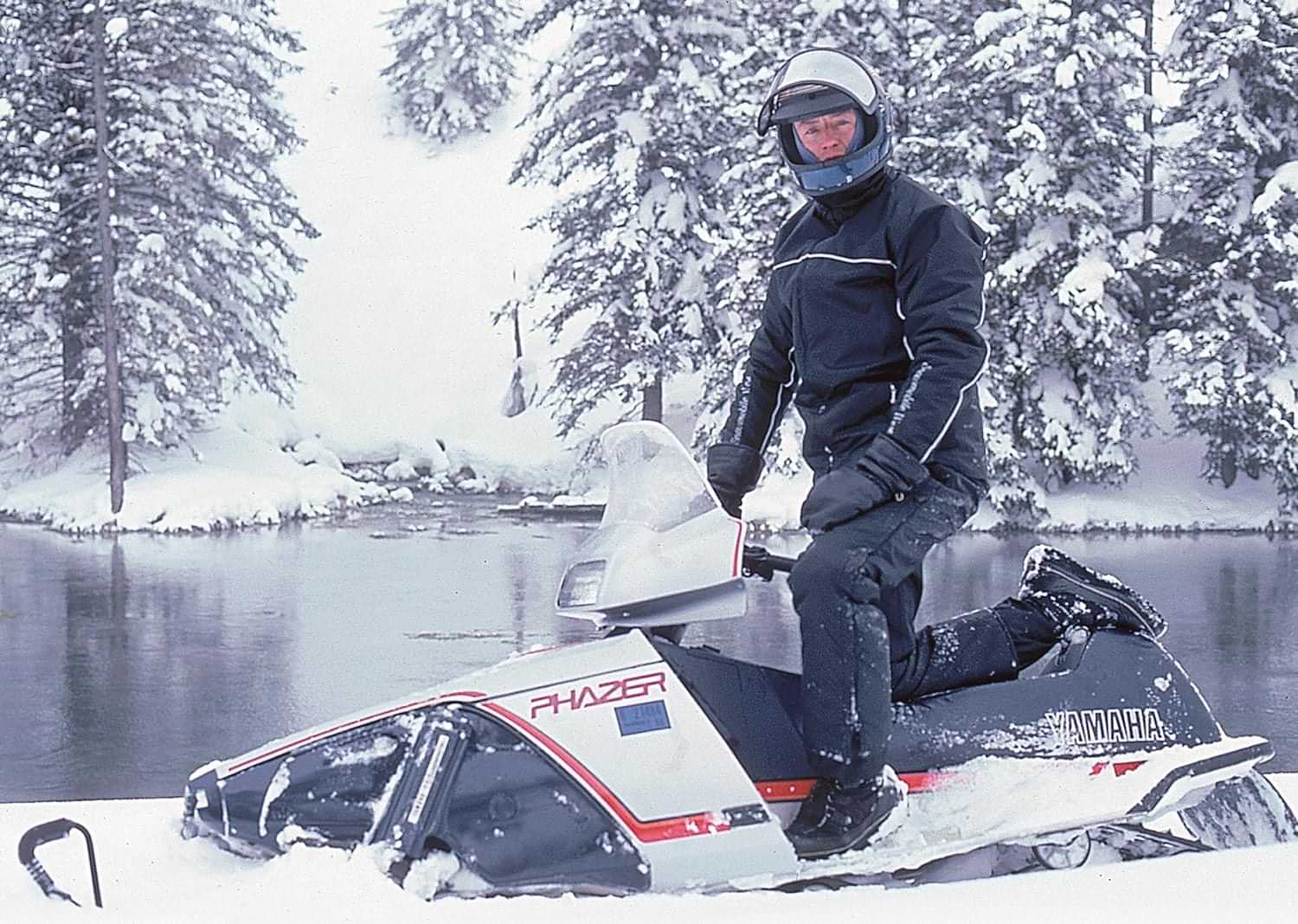
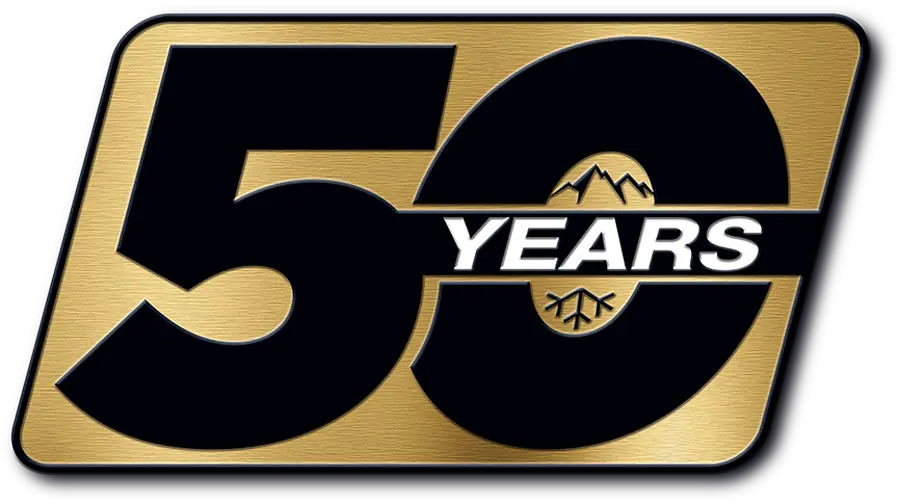
REFLECTIONS FROM DARRYL HARRIS
I moved to Idaho Falls and started the company in the fall of 1971. I think the next winter, 1972-73, Jim Osler (a friend) took me snowmobiling. The next winter I had a snowmobile.
The first thing I thought when I started snowmobiling was, “I think I’ll do a magazine.” I had no idea about the state of the industry. It was on a wing and a prayer because I was doing a potato magazine (Potato Grower of Idaho) which was working well for a brand-new magazine. If I had done market research, I would never have done a snowmobile magazine because I had no clue that the industry had peaked and was in the valley (Rupp had just announced that it had filed for bankruptcy).
A number of manufacturers were dropping out and a lot of them were losing money … and I started the magazine. The only thing that made sense was I wanted to do it and had the enthusiasm to do it. But I didn’t know anything about the industry. I didn’t know anybody at the manufacturing level. I knew Gary Wight and Monte Wight (local dealers). I learned that two main distributors were here in Idaho Falls—Arctic Cat and Ski-Doo. A Polaris distributor (Ray Brandt) was in Boise.
Westerners like having West in the name of magazines. The westerners liked to have a magazine for the West because we all knew that snowmobiling was different out here than in Minnesota and Wisconsin. That was the center of the snowmobiling universe back then.
(EDITOR’S NOTE: Harris was the founder and owner of SnoWest Magazine. He has since retired and turned the operations of SnoWest over to his son, Ryan Harris.)
During the first 10-15 years of publishing, SnoWest was known as Snowmobile West Magazine. The name was later shortened to SnoWest (mainly due to a masthead design change that would lend itself to a better newsstand presence). But it never changed its emphasis on western snowmobiling.
Although this industry has seen tremendous changes over the past half-century, there have been some constants. Snow is still white. The West still has the best snowmobiling anywhere. And SnoWest Magazine is still focused on western riding and mountain snowmobiles.
It is estimated that more than 70 percent of current subscribers grew up reading SnoWest. If snowmobiling has been a part of their lives, so has SnoWest. Many of our advertisers have been involved in the industry as long or longer.
People have come and gone. Even countries have come and gone. But SnoWest is still here.
We have experienced droughts, recessions, energy crises, unfriendly legislation, land closures, etc. But we’re still here. We have had three other in-house snowmobile titles come and go—SnowAction, Mod-Stock and SledHeads. But SnoWest is still here, focusing on western snowmobiling and mountain sleds.
There have been many major changes in snowmobiling. The early models had wood skis and no front or rear suspension. Then came the leaf spring front and metal skis. Then shocks, springs and eventually composite skis: from flat tracks to shallow patterns to deep lugs.
Snowmobiles have transitioned from bogie wheels to slide rails and even a single-beam rear end. Engines have gone from free air to fan-cooled to liquid-cooled. We have gone from one cylinder to two, three and four cylinders; from carbs to fuel injection.
Although this industry has seen tremendous changes over the past half-century, there have been some constants. Snow is still white. The West still has the best snowmobiling anywhere. And SnoWest Magazine is still focused on western riding and mountain snowmobiles.
It is estimated that more than 70 percent of current subscribers grew up reading SnoWest. If snowmobiling has been a part of their lives, so has SnoWest. Many of our advertisers have been involved in the industry as long or longer.
People have come and gone. Even countries have come and gone. But SnoWest is still here.
We have experienced droughts, recessions, energy crises, unfriendly legislation, land closures, etc. But we’re still here. We have had three other in-house snowmobile titles come and go—SnowAction, Mod-Stock and SledHeads. But SnoWest is still here, focusing on western snowmobiling and mountain sleds.
There have been many major changes in snowmobiling. The early models had wood skis and no front or rear suspension. Then came the leaf spring front and metal skis. Then shocks, springs and eventually composite skis: from flat tracks to shallow patterns to deep lugs.
Snowmobiles have transitioned from bogie wheels to slide rails and even a single-beam rear end. Engines have gone from free air to fan-cooled to liquid-cooled. We have gone from one cylinder to two, three and four cylinders; from carbs to fuel injection.
In 1994 Ski-Doo released the first Summit 583. The green one. It had HAC (high altitude compensation), which was a diaphragm that reacted to air pressure from elevation change and altered the air flow to the carbs. But tip it on its side or roll it over and you would be cranking on the pull rope for an hour to get it started again. However, it was truly the first sled built specifically for the mountains. It was also the first sled to use composite skis and it featured a track that had the deepest lug pattern in the industry.
Some may argue the 1984 Yamaha Phazer was the first mountain sled. It was. However, it wasn’t built specifically for the mountains. It just happened to work the best in the mountains.
In late season 2004, Ski-Doo released the first REV platform mountain sled—the Summit REV. It introduced a more upright rider position and centered the weight for better balance. It literally changed the riding style from on-your-butt to on-your-feet.
There have been other great sleds built for the western market. Cat engineers claimed its Powder Special was designed after studying SnoWest articles and combining our best ideas into new technology.

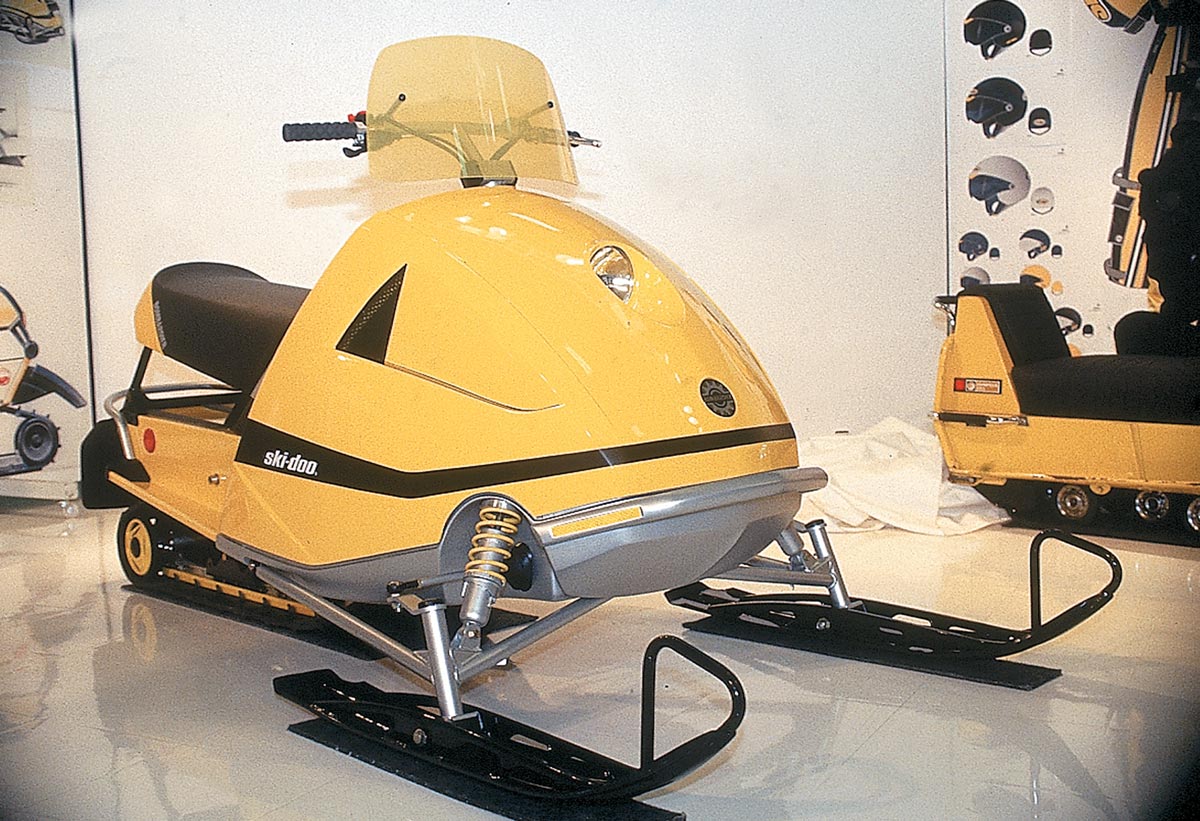
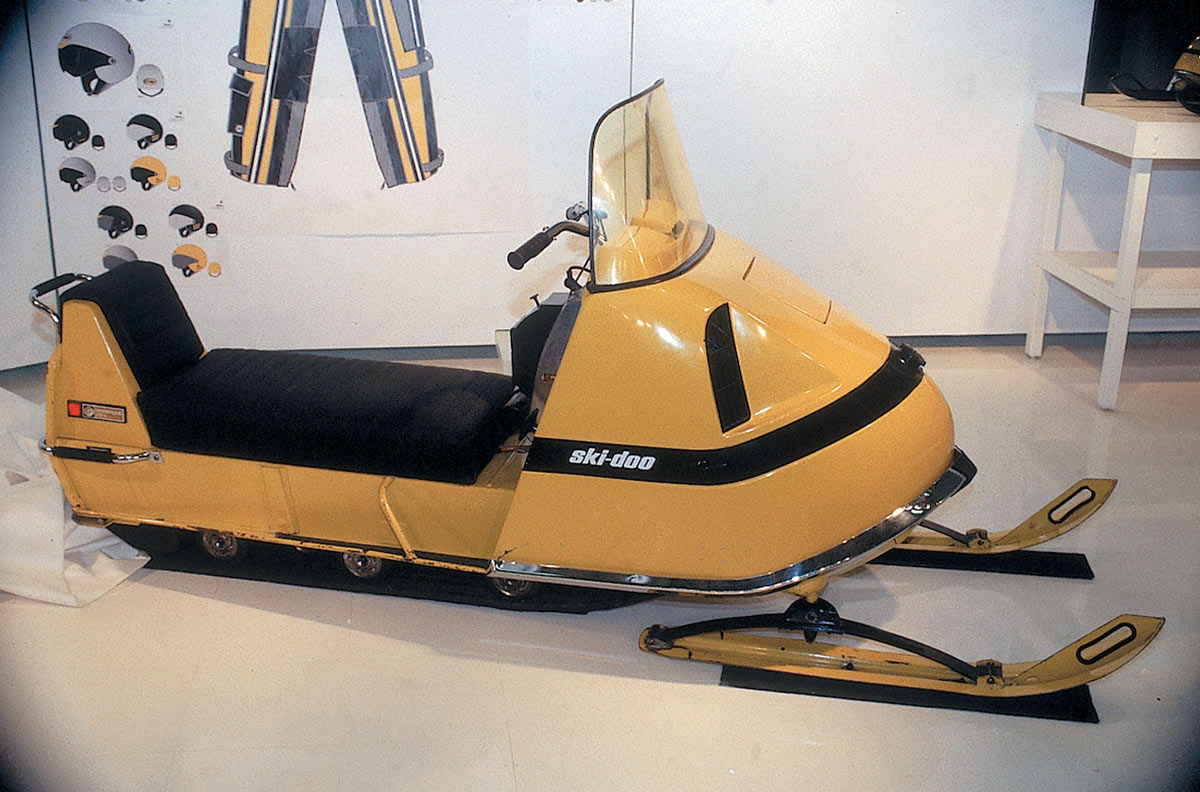
Polaris incorporated power-to-weight into its design equation when it developed its XLT (extra-light triple). It designed the SKS specifically for mountain climbing (Snow King Special after the Jackson Hillclimb).
Yamaha built the first four-stroke mountain sled—going as far as committing its entire line to four-stroke technology.
During the past 50 years the transition of the snowmobile has been remarkable. And somewhere early on in the transition, it became an industry truth that if a snowmobile is competitive in the mountains it will compete anywhere in the world.
Some may argue the 1984 Yamaha Phazer was the first mountain sled. It was. However, it wasn’t built specifically for the mountains. It just happened to work the best in the mountains.
In late season 2004, Ski-Doo released the first REV platform mountain sled—the Summit REV. It introduced a more upright rider position and centered the weight for better balance. It literally changed the riding style from on-your-butt to on-your-feet.
There have been other great sleds built for the western market. Cat engineers claimed its Powder Special was designed after studying SnoWest articles and combining our best ideas into new technology.



Polaris incorporated power-to-weight into its design equation when it developed its XLT (extra-light triple). It designed the SKS specifically for mountain climbing (Snow King Special after the Jackson Hillclimb).
Yamaha built the first four-stroke mountain sled—going as far as committing its entire line to four-stroke technology.
During the past 50 years the transition of the snowmobile has been remarkable. And somewhere early on in the transition, it became an industry truth that if a snowmobile is competitive in the mountains it will compete anywhere in the world.
Thanks!
That was a fun walk down memory lane!
That was a fun walk down memory lane!
My how things have CHANGED over the years...Thanks!
That was a fun walk down memory lane!
Similar threads
V
- Replies
- 0
- Views
- 2K
V
- Replies
- 7
- Views
- 1K
- Replies
- 8
- Views
- 2K
1
- Replies
- 0
- Views
- 5K
- Replies
- 0
- Views
- 2K



